Ten years of spotting trends
Ten years of spotting trends
What happened with the trends we have written about during the years? Have the Schibsted Future Report been able to foresee where they went? For ten years now we have produced the report – we celebrate this with looking back and reflecting over the changes we’ve seen.

Ten years of spotting trends
What happened with the trends we have written about during the years? Have the Schibsted Future Report been able to foresee where they went? For ten years now we have produced the report – we celebrate this with looking back and reflecting over the changes we’ve seen.
Serendipity opens up your mind
Do you recognise the feeling of not knowing where an idea came from? Suddenly it was just there, perhaps because you let your mind wander in unplanned…
A decade of visions – and a few failures
Eternal life, the metaverse, Google glasses: they came, they saw, but did they conquer? For the past ten years, the Schibsted Future Report has pried open the…
Favourite songs from the last decade
In this tenth edition of the Future Report all authors have chosen their favourite songfrom the last decade. Listen to them all on Spotify.
10 years in pictures
Which are the most memorable and best pictures from the last decade? As Future Report celebrates its tenth anniversary we have looked back and gathered…
Serendipity opens up your mind
Serendipity opens up your mind
This 2024 edition of the Schibsted Future Report is the tenth. Upon reflecting on the past reports, one article stands out as unexpectedly relevant today for editor Ann Axelsson. It celebrates the imagination and creativity that comes from unexpected encounters. In this tenth report we also look back at some of the trends we have looked into during the years – read more here.
By Ann Axelsson
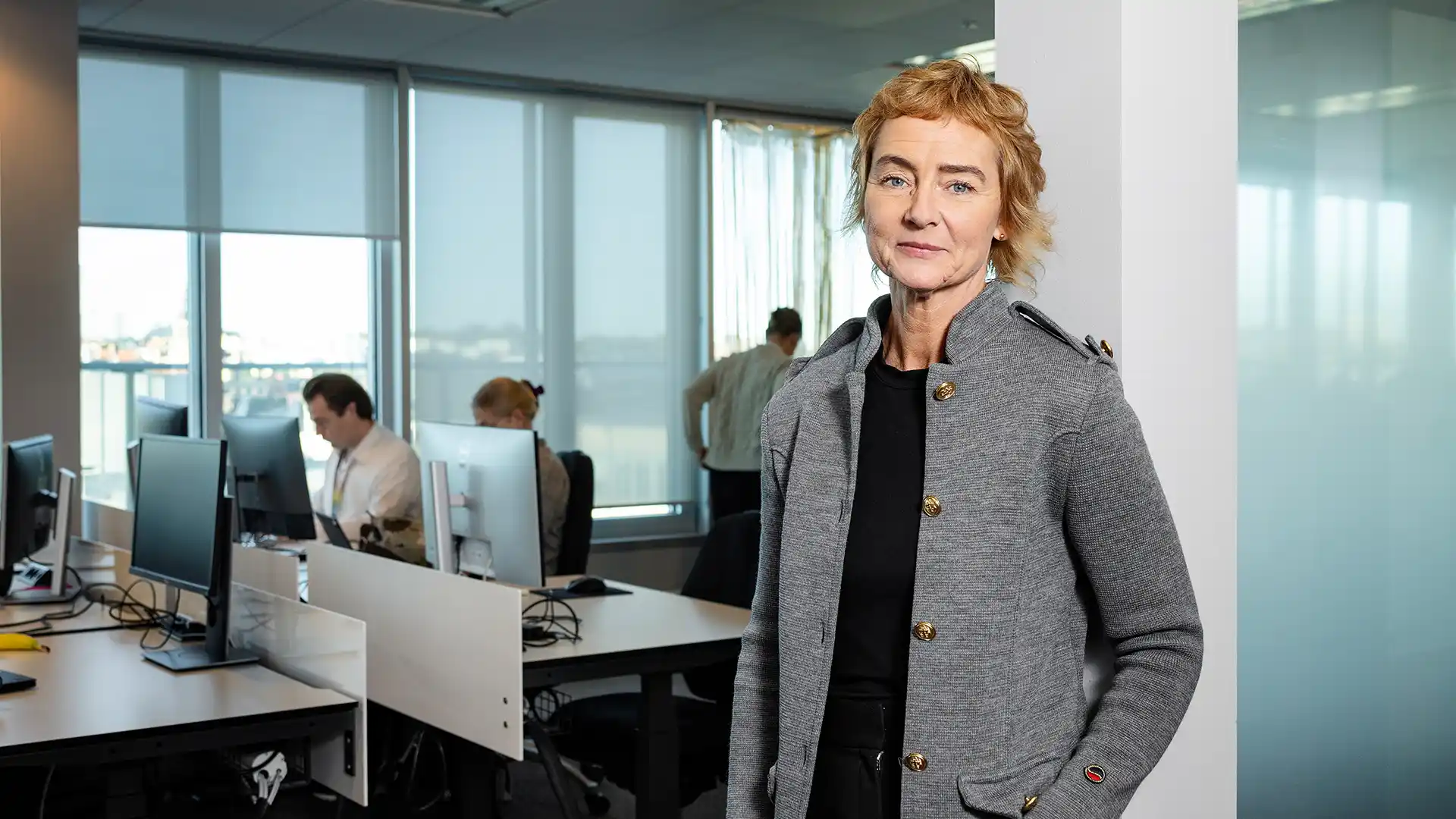
Serendipity opens up your mind
This 2024 edition of the Schibsted Future Report is the tenth. Upon reflecting on the past reports, one article stands out as unexpectedly relevant today for editor Ann Axelsson. It celebrates the imagination and creativity that comes from unexpected encounters.
In this tenth report we also look back at some of the trends we have looked into during the years – read more here.
By Ann Axelsson
Do you recognise the feeling of not knowing where an idea came from? Suddenly it was just there, perhaps because you let your mind wander in unplanned directions. Or sometimes a name you didn’t know you remembered simply pops into your head. Our brains truly work in mysterious ways. Our brain is also the inspiration for the AI technology we have today.
For the past ten years, we have produced the Schibsted Future Report. From the very beginning, AI was an important theme, and over the years, we have dived deep into the technology behind it – as we also do now. But when I started to reflect on all the reports we’ve produced, one article came to mind as being unexpectedly relevant in our discussions about technology and what it means to us as humans and society.
The risks of filter bubbles
It’s a story written for the 2016 report by Professor R. Ravi, who was involved in setting up a digital competence program for Schibsted. The title is “Serendipity – in search of the human algorithm,” and it’s about the risks associated with filter bubbles. But as I now reflect, it’s the very concept of serendipity that has stuck with me – and the benefits of serendipity that often lead to creativity and new ideas. The concept of serendipity comes from a Persian fairy tale about the three princes of Serendip, who were always making unexpected discoveries of things that they weren’t necessarily searching for. Professor Ravi describes the benefits of serendipity in his article like this:
“Letting one’s attention wander is an important precondition for free association and discovery via synthesis of ideas from various unrelated domains. Indeed, bright flashes of creativity are often preceded by such wanderings among seemingly unrelated concepts.”
Perhaps this ability is the biggest differentiator between us humans and AI applications, however advanced they are. And what will happen if we let go of that and lean too much on machines and the existing data from which they learn?
With that in mind, it’s no coincidence that the illustrations that accompany the AI articles in this report are not made with the help of AI. They are made by a human hand. Our photo editor Emma- Sofia has printed and cut out photos to create paper figures, put them on sticks, and placed them on a scene made of cardboard. An idea we came up with after a visit to the Museum of Technology in Stockholm. AI has and will continue to make wonders, no doubt. Not least in the media industry. But I believe that it’s important to also remember that human creativity is unique.
AI is like electricity
Over the years we have put different names on the new realities we’ve foreseen.
We have spoken of the synthetic decade, of the Internet of Things, and of the Metaverse. But perhaps the description given in the 2018 report by Azeem Azaar, Schibsted’s VP of Venture & Foresight in Schibsted2016-2017, is the very best. He described AI as electricity, an infrastructure that will power all parts of our daily lives, without us even noticing.
Speaking of serendipity, we have through the years also tried to capture trends that are not only technology-driven but have also caught people’s interest. Like biking into the future, or what a truly sustainable society looks like, or Formula 1. In this tenth edition, we look back on some of the trends we have written about to see if we were right – or wrong. Open this fold-out to find out.
As an editor looking back, there is one obvious reflection about the report itself and about Schibsted. Today, Schibsted is reaching out to people more often as one company in itself. Millions of end-users meet us every day through Schibsted’s login service Schibsted Account. And in the last few years, this report has become an important tool to spread the story of who we are and what we do.
Ten years is a long time, not least when considering the speed of change in technology, society and business. But from other perspectives, it’s not long at all. This year we have asked all contributors to pick their favourite song from the last decade. I was certain which song I wanted to pick – until I realised that that song was about 20 years old.
I hope you enjoy all the songs on our Schibsted Spotify playlist, individually selected by several creative and unique human beings.
[Sassy_Social_Share]
Facts
10 issues of Schibsted Future Report have been published.
174 people have contributed with text to the reports.
50,000 is the approximate number of reports distributed.

Ann Axelsson
Senior Product Manager, Strategic Communication, Schibsted
Years in Schibsted: 25
My favourite song the last decade: Paper Doll – John Mayer
A decade of visions – and a few failures
A decade of visions – and a few failures
Eternal life, the metaverse, Google glasses: they came, they saw, but did they conquer? For the past ten years, the Schibsted Future Report has pried open the door to the future. It has seen a decade of visions – and a few failures. We decided to look back at some of the trends we highlighted in the course of those years to see how they turned out.
By Erica Treijs

A decade of visions – and a few failures
Eternal life, the metaverse, Google glasses: they came, they saw, but did they conquer? For the past ten years, the Schibsted Future Report has pried open the door to the future. It has seen a decade of visions – and a few failures. We decided to look back at some of the trends we highlighted in the course of those years to see how they turned out.
By Erica Treijs
Future Report 2018: Biking into the future
Cars and cities make a bad combination. A car takes up a lot of space. On average it stands idle 96% of the time, and when it does move, it’s like a heavy, dangerous, noisy colossus which, if run on fossil fuel, also causes global warming.
For obvious reasons, a bike takes up much less space. And in recent years this 200-year-or-so invention has undergone a metamorphosis. Already in the 2018 edition of the Future Report, we predicted that we would cycle into the future, and we now have modern designed pedal-driven contraptions for every occasion and purpose. Not even cycling uphill with a heavy load has to end in snot and sweat as long as your electric motor kicks in at the first sign of an incline. When it comes to bicycle-friendly cities, Copenhagen is in front position, with lots of spacious and clearly signposted bike lanes.
Cities like Oslo and Stockholm still have some way to go, unfortunately, but that hasn’t impeded the advance of rental bikes or electric scooters, all of them based on access to new technologies, and recent years have seen huge developments in sensors, mobile technology, GPS trackers and artificial intelligence. Everything is paving the way for a new sharing economy, and this is just the beginning.

In the 2018 edition of the Future Report, we predicted that we would cycle into the future, and we now have modern designed pedal-driven contraptions for every occasion and purpose.

In the 2018 edition of the Future Report, we predicted that we would cycle into the future, and we now have modern designed pedal-driven contraptions for every occasion and purpose.
Future Report 2018: How to make friends with robots
Being digitally represented by an avatar is one thing, but having a robot as a friend is something quite different. That was precisely what we predicted would happen within just two years when we published the 2018 edition of the Future Report. A little robot that served you freshly brewed coffee in bed with a smile on its steel-grey lips might not be such a bad idea, but getting the day’s main headlines projected onto the ceiling seemed a little over the top, as did having a robot decide what you should wear.
Still, if a robotic friend were to become a reality in the foreseeable future, what would it look like? Research shows that we tend to think of robots as charming as long as they resemble something non-human, like a bear or a rabbit, but that we flinch the moment we meet robotsthat resemble humans. Perhaps the question shouldn’t be whether or not robots should resemble humans, but rather whether they would come to redefine what it means to be human? What ethical standards and values should your robotic friend have to really be your friend?
We tend to think of robots as charming as long as they resemble something non-human.
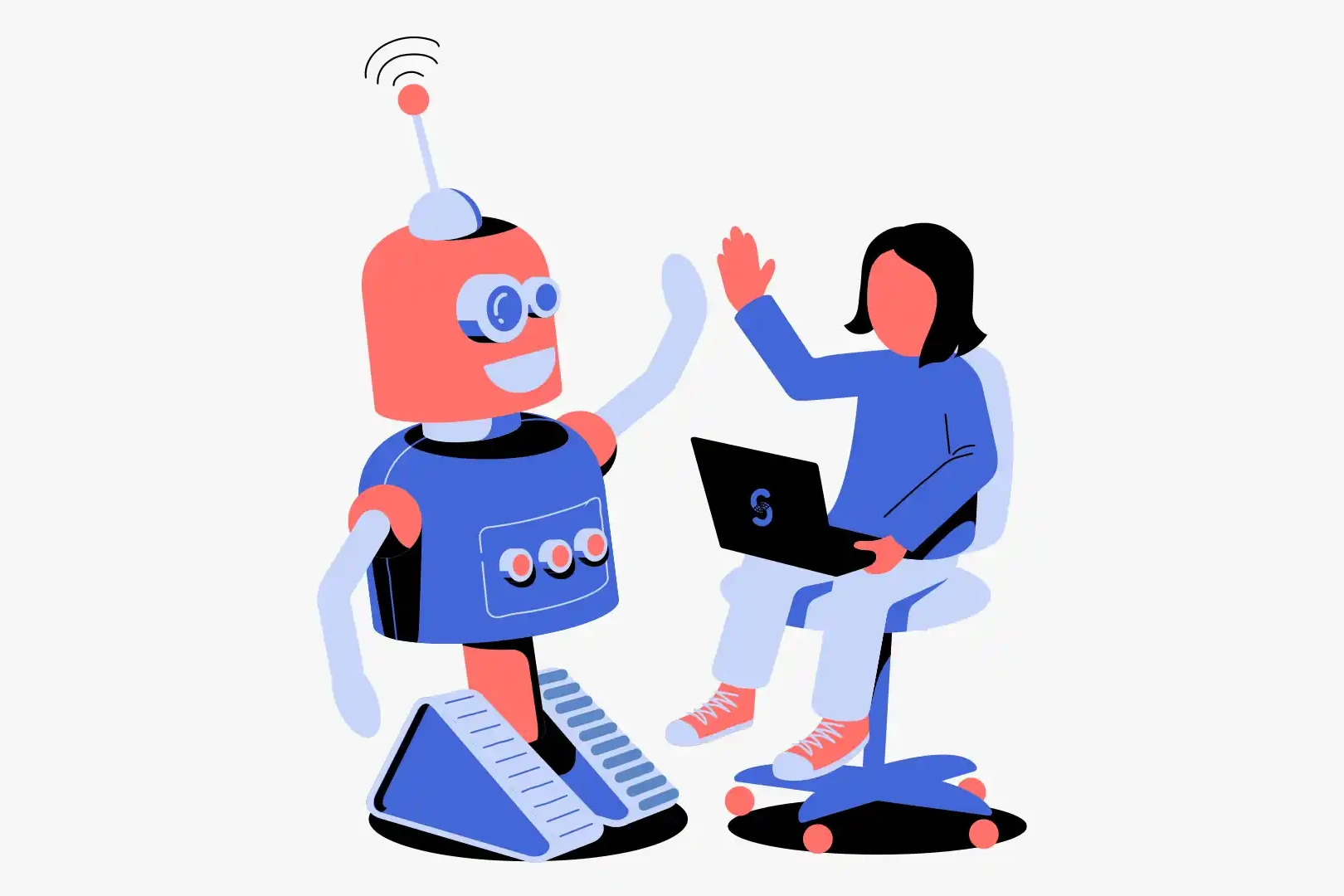

We tend to think of robots as charming as long as they resemble something non-human.
Future Report 2019: A new space age
“Don’t be afraid of the man in the moon,” sang David Bowie in his self-titled debut album, two years before Neil Armstrong took one giant leap for mankind in 1967. And only a month before the Apollo 11 space flight, Bowie sang about Major Tom, and the people on Earth joined in and stared into space. There’s something alluring out there, in the unknown. But maybe it’s like Apollo 11 astronaut Michael Collins said, that the moon is not a destination; it’s a direction?
In 2019 we wrote about the showdown in space, which no longer is happening between countries but between private entrepreneurs. Elon Musk, founder of Tesla and SpaceX, believes that when World War III breaks out, civilisation will survive on Mars. Jeff Bezos, Mr Amazon, sees space more as a place to do our dirty work, where mining, manufacturing and recycling will be done as part of a vision to keep Earth “clean.”
And even though we can now travel into space with SpaceX, there’s little talk of colonies on Mars and mining operations. The rockets seem to have ended up in a more mundane sphere as carriers of satellites and space station equipment. And perhaps most importantly, new areas of application here on Earth are often found for innovations that were developed for space technology.
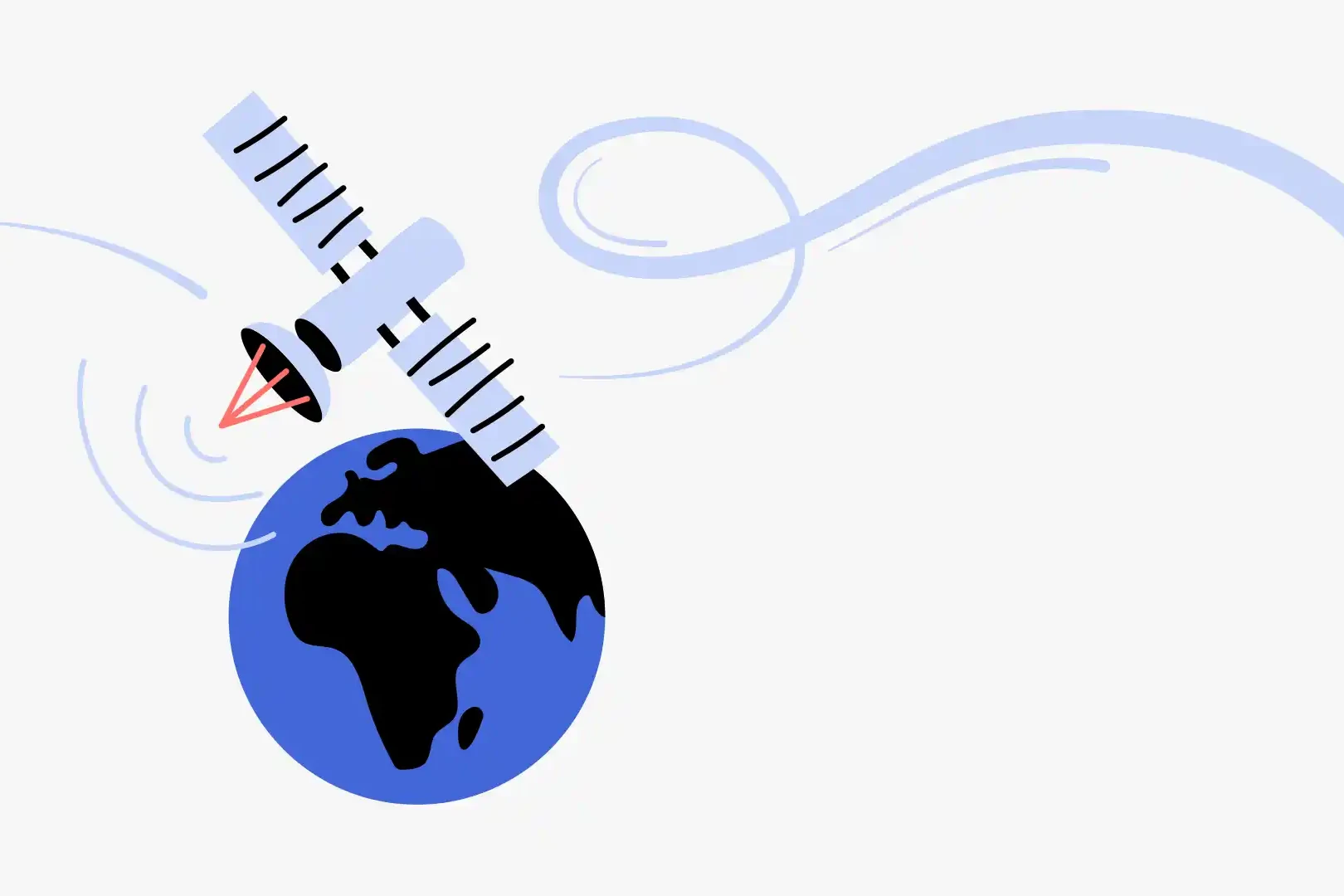
Famous entrepreneurs don’t speak very loudly about the next space age anymore.

Famous entrepreneurs don’t speak very loudly about the next space age anymore.
Future Report 2017: Reality is getting hacked
Suddenly we saw them everywhere: people who moved around the city, often in groups, with their phones at the ready. They were out hunting, but not for blood; instead they were frantically searching for some of the 700 figures in the Pokémon Go game. Using mobile phone cameras and geolocations, the game combines virtual and actual reality, and when it was launched it spread like wildfire. For a while, the game had more daily users in the US than Twitter, and users even spent more time on the app than on Facebook. One of the truly unique features of Pokémon Go was that its users not only made imaginary or digital friends; it created communities of people who met and searched for Pokémon both in their own towns and further afield. Of course, the movement had its own “pokestops,” where more commercial actors made a fast buck from the hype. Its huge success in 2017 is unquestionable, so its sudden demise and the fact that no successors pursued the augmented reality track came as a surprise. But the game world is a lucrative hunting ground, with no limits on technological innovation. No one knows what will come next, only that more will come. A lot more.
In 2017 Pokémon Go was a huge success.


In 2017, Pokémon Go was a huge success.
Future Report 2015: The rise of wearables
It had been in the cards for some time. It was 2015, and smart devices were to become wearable accessories and be used in combination with smartphones and tablets. Google Glass was essentially a brand of glasses that could communicate through audio, record video and show information via the tiny display above the eye. This new gadget was clearly going to fundamentally change everything. But there was a catch, namely human vanity – and possibly the USD 1,500 price tag.
Aside from being hideously ugly, heads-up/hands-free technologies demanded way too much attention. To be able to put down your phone and shut off the computer is, after all, something that allows human behaviour other than that based on ones and zeros. Google Glass disappeared from the shelves in 2015 but wasn’t sent to the graveyard until 2023. But – now Apple is soon entering the scene. Their Vision Pro is said to be the future of AR/VR experience. More for indoor gaming than city cruising though.

Wearables that demand too much attention is a challenge.

Wearables that demand too much attention is a challenge.
Future Report 2017: Cars reinventing urban life
Electric vehicles have now become part of the urban landscape, with cables all over the place, and chargepoints sprouting up on streets and in car parks and residential parking facilities. Electrification is going more or less as the politicians planned; the EV fleet is growing and the charging infrastructure is gradually expanding. But what’s next?
Autonomous vehicles, many would say, and back in 2017 we predicted their rapid development. The technology now exists, for sure, but there are still no real answers to the ethical and/or moral issues. Who or what is at fault when an accident occurs? The technology is being tested in many places, with good results when it comes to aspects like accessibility and energy consumption. Put simply, it is progressing but, as is often the case, not as fast as expected.
On 16 August 2016, Ford Motor Company announced its intention to offer on-demand autonomous vehicles in 2021. By the time 2024 comes around, these driverless vehicles will still not be running on European roads and fundamentally changing the entire transport sector. No one knows when it will happen, but we know that it can. Just look at how electric vehicles entered the market.
There are still issues to solve for autonomous vehicles.


There are still issues to solve for autonomous vehicles.
Future Report 2019: Hacking the code of ageing
“If you could choose between eternal life and having children, which would you choose?” A rhetorical question that effectively drives the point home. Not even in Silicon Valley can immortality be bought – yet. But the idea that it might be possible to prolong human life has for some become an obsession and for others a business concept, and it’s a trend that has grown since 2019.
What is immortality, anyway? Is it a matter of charging your brain in the cloud, or does it take cryonics, preserving human bodies at ultra-low temperatures in the hope that they can one day be revived? Well, research is already being done on how a body can get rid of ageing “zombie cells,” on the human anti-ageing pill NAD+ and on injections of stem cells, all with the aim of prolonging human life.
More attention and funding are needed if researchers are to fully investigate the limits to human health and life expectancy. And those who think that manipulating the course of nature is unnatural should also ask themselves whether it isn’t human behaviour to push our boundaries. Only time will tell.
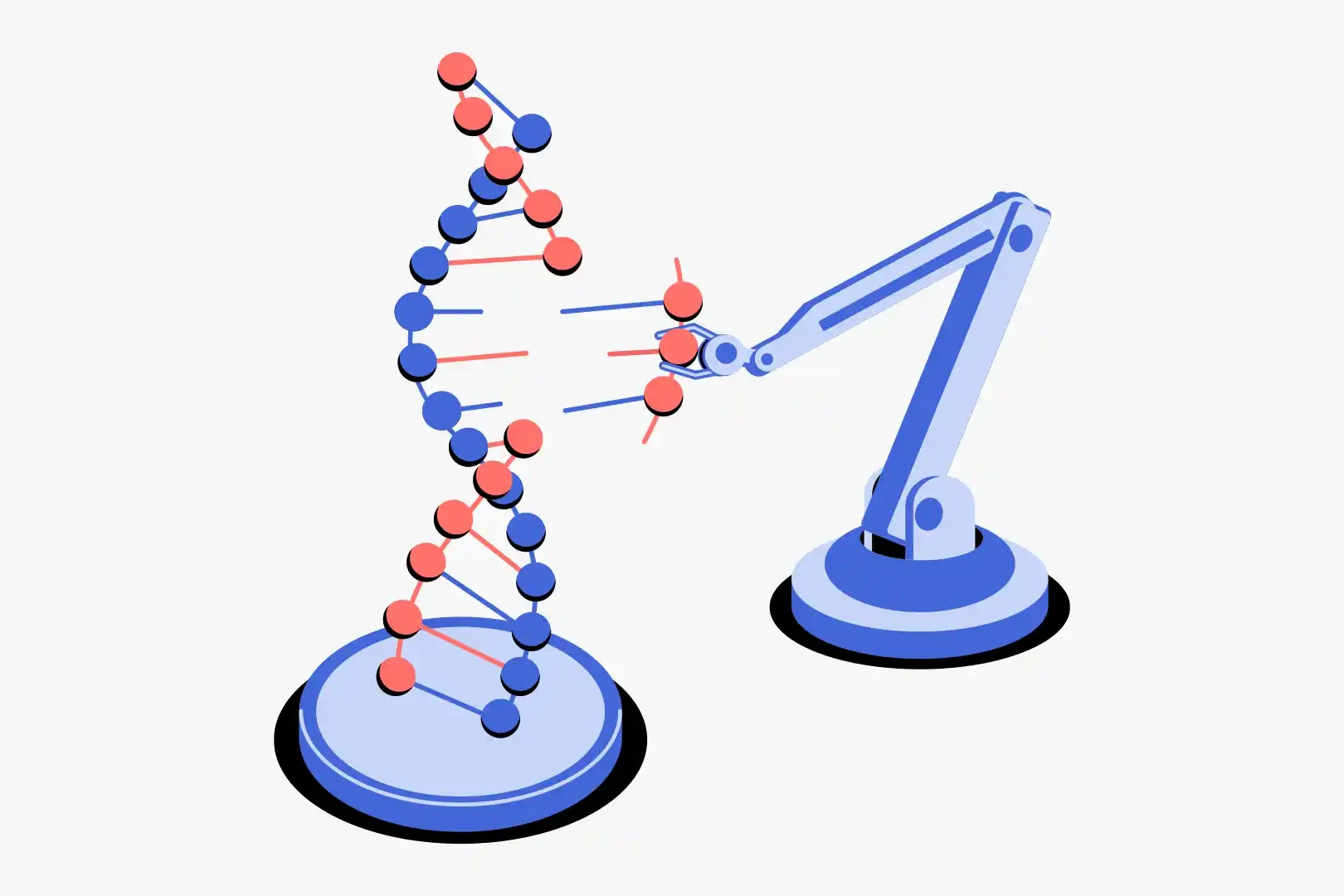
The interest for eternal life is growing.

The interest for eternal life is growing.
Future Report 2023: Redefining our digital lives
Few subjects in the world of technology have prompted such unbridled optimism and contemptuous scepticism as “the metaverse,” the next chapter for the internet. A difficult to define successor to today’s internet, though in a 3D universe. The concept itself, championed primarily by Meta, has almost disappeared from the agenda, in step with the company’s cutbacks.
But regardless of what we call it, there are two things we know: as the boundaries between the digital and the physical are increasingly blurred, we will use more of our bodies and our senses to integrate with computers, just as computers will become increasingly embedded in our everyday lives. Our digital lives will become more social, and it will be harder to differentiate between a game, a concert and a social network. Read more: The editor’s reflections on the tenth anniversary
[Sassy_Social_Share]

Erica Treijs
Reporter at Svenska Dagbladet
Years in Schibsted: 23
My favourite song: Chronically Cautious – Hello – Adele
Machines like us - a brief history of artificial intelligence
Machines Like Us - A brief history of artificial intelligence
From horse manure and monsters to inscrutable language models. The dream of artificial intelligence is as old as myth itself. But why are we so eager for artificial minds to replace our own?
By Sam Sundberg

Machines Like Us - A brief history of artificial intelligence
From horse manure and monsters to inscrutable language models. The dream of artificial intelligence is as old as myth itself. But why are we so eager for artificial minds to replace our own?
By Sam Sundberg
“AI is a bigger threat than climate change”, “AI could cause ‘civilisation destruction’”, “Humanity is failing the new technology’s challenge.”
As OpenAI launched ChatGPT in 2022, not only did people envision amazing new ways to use the technology for the good of humanity, but many AI scientists expressed grave concern that the technology would be used to flood the internet with disinformation or worse, that machine intelligence was about to surpass human intelligence, presenting questions we are not yet ready to answer.
Many have speculated that low-level jobs will soon be taken over by AI. But no longer are only simple, repetitive occupations at risk. Lawyers, physicians, artists, writers… as artificial intelligence approaches the human level we all should worry about – or look forward to – machines replacing us in the workplace.
I recently spoke to Max Tegmark about these developments. He is the author of “Life 3.0,” a professor at MIT and a renowned AI expert, and he is profoundly worried. Tegmark has been campaigning against nuclear weapons for years, but at present, he considers artificial intelligence an even greater existential risk. If we choose to replace ourselves, and let machines do all our work for us, the human species may simply lose the desire to carry on and to procreate. But why, Tegmark wonders, would we want to replace ourselves with machines?

Ada Lovelace is often described as the first computer programmer and is said to have created the first algorithm created to be processed by a machine.

Ada Lovelace is often described as the first computer programmer and is said to have created the first algorithm created to be processed by a machine.
In fact, this question echoes through the ages: Why have scientists and alchemists for so long strived to create not just useful machines, but machines like us?
The pursuit of artificial intelligence is not about merely making efficient tools, like calculators and word processors. It is about mimicking human intelligence, a quest to equal or even surpass it. In essence, turning the myth of creation on its head, making humans the creators of new life through intelligent design. This dream has ancient roots.
An awesome bronze giant
The Greeks told of the divine smith, Hephaestus, who forged automatons to serve its masters. Talos is the most famous of his creations, an awesome bronze giant who patrolled the island of Crete, protecting it against pirates. At Alexandria, the Egyptian scholar Heron built a spectacular array of automata for the theatre. Not intelligent, naturally, but appearing alive.
Around the thirteenth century and onward, many learned men, scholars and occultists were rumoured to possess mystical contraptions known as “brazen heads,” mechanical heads covered in bronze, which could answer any questions put to them. This may have been a legend borne out of the ignorance and jealousy of their scholarly wisdom. No evidence of any scientist or magician creating such a device exists. But soon automatons of a less supernatural kind became all the rage among the European aristocracy.
These cleverly constructed machines were no more than mechanical divertissements made of cogwheels and springs, inspiring awe and wonder. Magic tricks, to entertain guests, rather than actual dark arts. But alchemists and occultists were still hard at work, exploring the possibilities of creating some form of intelligent beings.
But alchemists and occultists were still hard at work, exploring the possibilities of creating some form of intelligent beings.
Indeed, in the sixteenth century, the Swiss alchemist Paracelsus claimed to have created a living, breathing homunculus by burying human sperm in horse manure for 40 days, magnetizing it, and then feeding it human blood for 40 more weeks. This little humanoid was said to work as an assistant to its master. Paracelsus promised, in words that could very well refer to the creation of artificial general intelligence far in the future:
“We shall be like gods. We shall duplicate God’s greatest miracle – the creation of man.”
Throughout history mankind has strived to create useful machines. This is a mechanical pinwheel calculator.


Throughout history mankind has strived to create useful machines. This is a mechanical pinwheel calculator.
In 1818, a sensational horror novel was released that tickled the imagination of thousands of readers. “Frankenstein,” by Mary Shelley, is the tale of a modern scientist following in the footsteps of alchemists like Paracelsus, consumed by the idea of creating an artificial man through scientific means. The Italian biologist Luigi Galvani had recently discovered that electricity is the means by which the brain sends signals to the muscles, so Shelley had Viktor Frankenstein animating his creature by electric current from a burst of lightning. The result, of course, is Frankenstein’s monster – a huge man, terrifying to its creator and woefully unhappy, who goes on a murderous rampage. The tale may serve as a warning of humankind’s troubles in controlling their greatest inventions.
Starting point of modern computing
Many historians would cite Charles Babbage’s designs for the Analytical Engine as the starting point of modern computing. In the 1830s, Babbage, a British inventor, engineer and mathematician, came up with two designs for machines capable of performing mathematical calculations. The first, called the Difference Engine, was funded by the British government and Babbage himself, but the project was never completed.
The second, called the Analytical Engine, was even more ambitious, and funding was hard to come by. Along with his companion Lady Ada Lovelace, he came up with different schemes to fund the project. At one point they proposed a tic-tac-toe-playing machine to entice investors, then they considered building a chess machine. Before they could build it, however, they came up with an even better idea. They would build the perfect system for betting on horse races, to fund the completion of the Engine. The scheme was meticulously planned by some of the brightest minds in England and ended in spectacular failure. Soon Lady Lovelace was deep in debt and rescued not by any ingenious machines but by her kind mother.
The Analytical Engine, like its predecessor, was never completed. But Babbage’s designs, along with Lady Lovelace’s ruminations on how the Engine would in theory be able to not only calculate numbers but to have those numbers to represent anything – for instance sounds in a musical composition – was an important step in the creation of the universal computer.

Technology shifts sometimes happens fast. Devices that not too long ago seemed very modern, can quickly go out of fashion.

Technology shifts sometimes happens fast. Devices that not too long ago seemed very modern, can quickly go out of fashion.
It would be another century before such a computer was finally realised. The world’s first programmable computer was built in the late 1930s by the German engineer Konrad Zuse. He called the mechanical, motor-driven machine the Z1. Although it was the first computer to be finished, many other engineers were tinkering with computers around the world. At this time, the field of psychology was also starting to understand the human mind as a biological network, and piece by piece figure out its workings. Perhaps the brain was best understood as a machine? And if so, might not a machine such as the computer, in the future, be able to perform the same work as the brain?
With these questions in mind, scientists were again starting to entertain ideas about thinking machines, mimicking human thought and behaviour. Their ideas were collected under names such as “cybernetics,” “automata theory” and “complex information processing”. It was not until 1956 that the American scientist John McCarthy came up with a new name for the field, that proved to be sticky: “artificial intelligence.” That summer he joined 19 other prominent academics at Dartmouth College in New Hampshire for a workshop brainstorming about the exciting new field.
Creating a computer mind
The participants of the conference were engineers, psychologists, neuroscientists, mathematicians, physicists and cognitive scientists; an interdisciplinary brain trust well suited to taking on the challenges of creating a computer mind. Their mission statement – brimming with the naïveté that comes from not yet having tried and failed – outlines their lofty ambitions:
“Every aspect of learning or any other feature of intelligence can in principle be so precisely described that a machine can be made to simulate it. An attempt will be made to find how to make machines use language, form abstractions and concepts, solve kinds of problems now reserved for humans and improve themselves.”
The participants were confident that they would make great strides in this direction during the two-month workshop. It would be a stretch to say that they achieved their goal, but during those long discussions at the Dartmouth Math Department, they at least firmly established the new field of AI.
Mechanical divertissements, made of cogwheels and spring, to entertain guests were popular among European aristocracy.


Mechanical divertissements, made of cogwheels and spring, to entertain guests were popular among European aristocracy.
Human-level machine intelligence would turn out to be far harder to achieve than the early pioneers imagined. During the following decades, AI hype would be followed by AI winter in a cyclical pattern. Several prominent AI researchers, among them Marvin Minsky, had predicted human-like intelligence by the 1980s. When those predictions were proven wrong, some were deflated, but the Japanese government was eager to have Japan take the lead. In 1981, Japan initiated the Fifth Generation Computing Project, pouring 850 billion dollars into AI research, with the stated goal of creating machines that could carry on conversations, translate languages, interpret pictures and reason like human beings.
Progress was made during this time, primarily with limited systems tuned to play chess or give expert advice in narrow fields of inquiry. But anything even vaguely resembling the dynamic and wide-ranging intelligence of humans remained out of grasp. After the Fifth Generation Project came to an end, without fulfilling its promise, the field again found itself at a low point late in the 1990s.
Luckily, an offshoot of AI research was about to gain new traction. In parallel to the mainstream research going on at prestigious universities, well-funded government programs and hyped-up companies, some scientists had taken an interest in artificial neural networks. The network architecture was thought to resemble the human brain, offering new ways of representing machine thoughts compared to the strictly algorithmic manipulation of symbols of conventional AI systems. A neural network could be trained on appropriate data sets, much like a child learns, until its maze of internal connections becomes suitable for its designated tasks.
A fatal flaw
Artificial neural networks had a fatal flaw, however. As soon as you started to scale a network to do something interesting, its complexity increased exponentially, and the system ground to a halt. The computer hardware of the time, with architecture very different from human brains and far less processing power, simply could not keep up. So, this line of research remained theoretical, dormant for decades until, deep in the 2010s, the time had come for the AI field to enter a new era of machine learning.
Three developments of the new millennium came together to finally make neural networks practical:
Computer hardware kept getting faster, smaller and more energy efficient, as predicted by Moore’s Law.
Computer scientists developed more sophisticated architectures and algorithms for artificial neural networks.
An immense trove of digital text, images and sounds accumulated online, an all-you-can-eat buffet of information for neural networks to be trained on.
Looking back at what was then envisioned, artificial intelligence is finally living up to its name.
With the recent work of DeepMind, OpenAI, Google and Microsoft, we arrive at today’s state of the art. Artificial intelligence may have missed the deadline of Japan’s Fifth Generation Project, but looking back at what was then envisioned – or indeed, what the Dartmouth Workshop sought to achieve – artificial intelligence is finally living up to its name. ChatGPT and its rivals can easily hold conversations with humans; Google Translate and its ilk can translate text and speech in the blink of an eye; and many neural networks not only interpret images but also create beautiful pictures from natural-language prompts.
Several fundamental questions do remain, however. Can these machines truly reason? Can they think? Can they feel? Will they ever?
The French seventeenth-century philosopher René Descartes famously formulated a dualist theory where mind and body are metaphysically separate. He was inspired by the automatons on display in Paris at the time and concluded that mind and body must be different substances. The latter can be replicated by automatons, while the former is singular to man and intimately tied to what makes us us. We think, therefore we are.
Unexpected leaps
With AI science advancing – at times inching forward incrementally, sometimes striding with unexpected leaps – software engineers are getting closer to imitating the human mind as well. Chat GPT has repeatedly defeated the Turing test, designed by the British computer pioneer Alan Turing to settle the question: “Can machines think?”
Refined algorithms, humongous data sets and clever reinforcement learning techniques are pounding at the walls of dualism. Perhaps, as the Dartmouth Workshop proposed, the human mind is a mere machine after all. And if this is the case, why would we not be able to replace it with more efficient machines?
The history of artificial intelligence is a tale of scientific progress, of engineering failures and of triumphs. But it is also the story of our struggle to understand our own minds. Are we truly unique? Are our brains, like our bodies, simply machines governed by electrical impulses? When we dismiss the “thinking” of large language models as simply a series of predictions of what comes next, are we absolutely certain that this does not also apply to human minds?
It seems inevitable that we will soon be able to create genuine thinking machines – if we haven’t already.
At this point (as at every point in the history of AI) it seems inevitable that we will soon be able to create genuine thinking machines – if we haven’t already. There is still some disagreement about whether we can create feeling machines, however. Conscious machines. Machines that can do and experience everything that a human can and more.
Some aspects of this may be harder than we can foresee. On the other hand, it may be within our power sooner than we think, emerging incidentally as our models become increasingly complex, combining techniques from neural networks with symbolical AI.
Mary Shelley would be delighted to see modern scientists still hard at work trying to realise the ancient dream of godlike creation. The full original title of her famous horror novel is “Frankenstein; or, The Modern Prometheus.” The subtitle alludes to the crafty Titan from Greek mythology who stole fire from the Olympian gods and gave it to man. Fire, in this old tale, symbolises knowledge, invention and technology – powers Zeus had determined must be reserved for gods and withheld from humankind.
In some versions of the myth, Prometheus gives us more than fire; moulding the human race from clay, he also gives us life. Millennia later, the fire he gave us is still burning bright, and we are now the ones doing the moulding. Not from clay, but from code.
[Sassy_Social_Share]

Sam Sundberg
Freelance writer, Svenska Dagbladet
My favourite song the last decade: Light years – The National
A beginner’s guide to generative AI
A beginner’s guide to generative AI
We’ve all heard of AI, machine learning and ChatGPT. But how does it really work? Here’s a beginner’s guide to the technology behind – and what might come next.
By Sven Størmer Thaulow

A beginner’s guide to generative AI
We’ve all heard of AI, machine learning and ChatGPT. But how does it really work? Here’s a beginner’s guide to the technology behind – and what might come next.
By Sven Størmer Thaulow
In today’s rapidly evolving digital landscape, buzzwords like “AI” or “machine learning” are becoming increasingly common. Even if you’re not entirely sure what they mean, chances are you’ve encountered them in some form or another, perhaps through smartphone assistants like Siri or Alexa or in online customer service chats. However, a subset of AI, known as generative AI, is emerging as a transformative force in the digital world. Here’s a closer look at this technology and its implications for the future.
Unravelling the Mystery of Generative AI
At its core, generative AI is about creation. Much like an artist creates a painting or a writer crafts a story, generative AI can produce new content. But instead of paint or words, its tools are data and algorithms.
Imagine having a conversation with a friend about your favourite books. As you talk, your friend might suggest a new book for you to read based on what you’ve mentioned. Generative AI operates on a similar principle. Feed it with enough conversations about books, and it could suggest or even create a synopsis of a book that doesn’t exist but fits within the parameters of the conversations it’s analysed.
The Magic Behind the Screen
The magic of generative AI lies in its ability to produce content, be it text or images. But how exactly does it do this?
For text, generative AI models are trained on vast databases of written content. They analyse patterns, contexts, and structures within these texts. When given a prompt or starting point, they use this training to predict and generate what comes next. It’s like teaching a child to speak by immersing them in conversations until they start forming their own sentences.
On the image front, things get a bit more complex. Techniques like Generative adversarial networks (GANs) are often employed. Here’s a simplified explanation: imagine two AI systems – one is the artist (generator) and the other is the critic (discriminator). The artist creates a picture, and the critic evaluates it. If the critic can easily tell it’s a generated image and not a real one, the artist tries again. This back-and-forth continues until the artist produces something the critic can’t distinguish from a real image. Through this process, the AI becomes adept at creating realistic images.
Societal Impact and the Media Realm
The proliferation of generative AI doesn’t merely affect technological circles; its ripples will be felt across society. As AI-generated content becomes commonplace, our ability to discern between human-created and AI-created material might blur. This poses profound questions about authenticity, trust and the value of human creativity. For media companies like Schibsted, the implications are vast. On one hand, AI can generate news reports, write articles or even create visual content at a pace unmatched by humans, offering efficiency and cost savings. However, this also brings challenges. How do media houses ensure the credibility of AI-generated content? And as audiences become aware of AI’s role in content creation, how will this shape their trust and engagement with media outlets?
Charting the Evolution of Generative AI
Like all technologies, generative AI wasn’t born overnight. It’s been a product of years of research, improvements and refinements. As computational power increases and algorithms become more sophisticated, the capabilities of generative AI expand. Currently, we’re witnessing AI that can draft articles, compose music and generate artwork. Yet, this is just the beginning. The trajectory suggests
a future in which generative AI can create more complex, interactive, and nuanced content. Think of virtual realities indistinguishable from our own, or digital assistants that not only understand our preferences but can also predict our needs before we articulate them.
The Next Wave of Breakthroughs
Predicting the future is always a gamble, but based on the current momentum, several exciting developments appear on the horizon for generative AI.
- Personalised content: In a world saturated with content, personalisation is becoming paramount. Generative AI could craft experiences tailor-made for individuals. Imagine a movie that adjusts its storyline based on your preferences or a video game that evolves based on your playing style.
- Education revolution: Customised learning isn’t new, but with generative AI, it could reach unprecedented levels. Students might have access to study materials created on the fly, precisely addressing their weak points and reinforcing their strengths.
- Artistic collaboration: While some fear AI might replace human artists, a more optimistic view is a future where artists and AI collaborate. An AI could suggest melodies for a musician or sketch ideas for a painter, enriching the creative process.
In conclusion, generative AI lies at the intersection of art and science, holding the promise of a world where technology enhances creativity, personalisation, and efficiency. At Schibsted we feel we are on the cusp of this new era, and that it’s crucial to approach it with both excitement and caution. We must ensure that as we harness its potential, we also consider the ethical implications of AI shaping our reality.
Using an AI co-pilot: How did I make this article?
This article was a classic task for generative AI as it was a fairly generic piece more describing a well-known domain rather than being a very personal and opinionated article – so I used ChatGPT as a co-writer. I tried out a prompt describing the article I wanted. It became very “chatGPT-ish” – lots of numbered bullets with sentences. So I tried again with a prompt saying I wanted it in “New York Times” style. I got closer. I tried some more prompt variations and also limited it to the number of words. When I had the 80% text I wanted I started rewriting somewhat, cleaning up mistakes and adding some elements. And voila – a pretty decent article was born!
[Sassy_Social_Share]

Sven Størmer Thaulow
EVP Chief Data and Technology Officer, Schibsted
Years in Schibsted: 4
My favourite song the last decade: Thinking of a Place – The War On Drugs
Favourite songs from the last decade
Favourite songs from the last decade
In this tenth edition of the Future Report all authors have chosen their favourite song from the last decade. Listen to them all on Spotify.
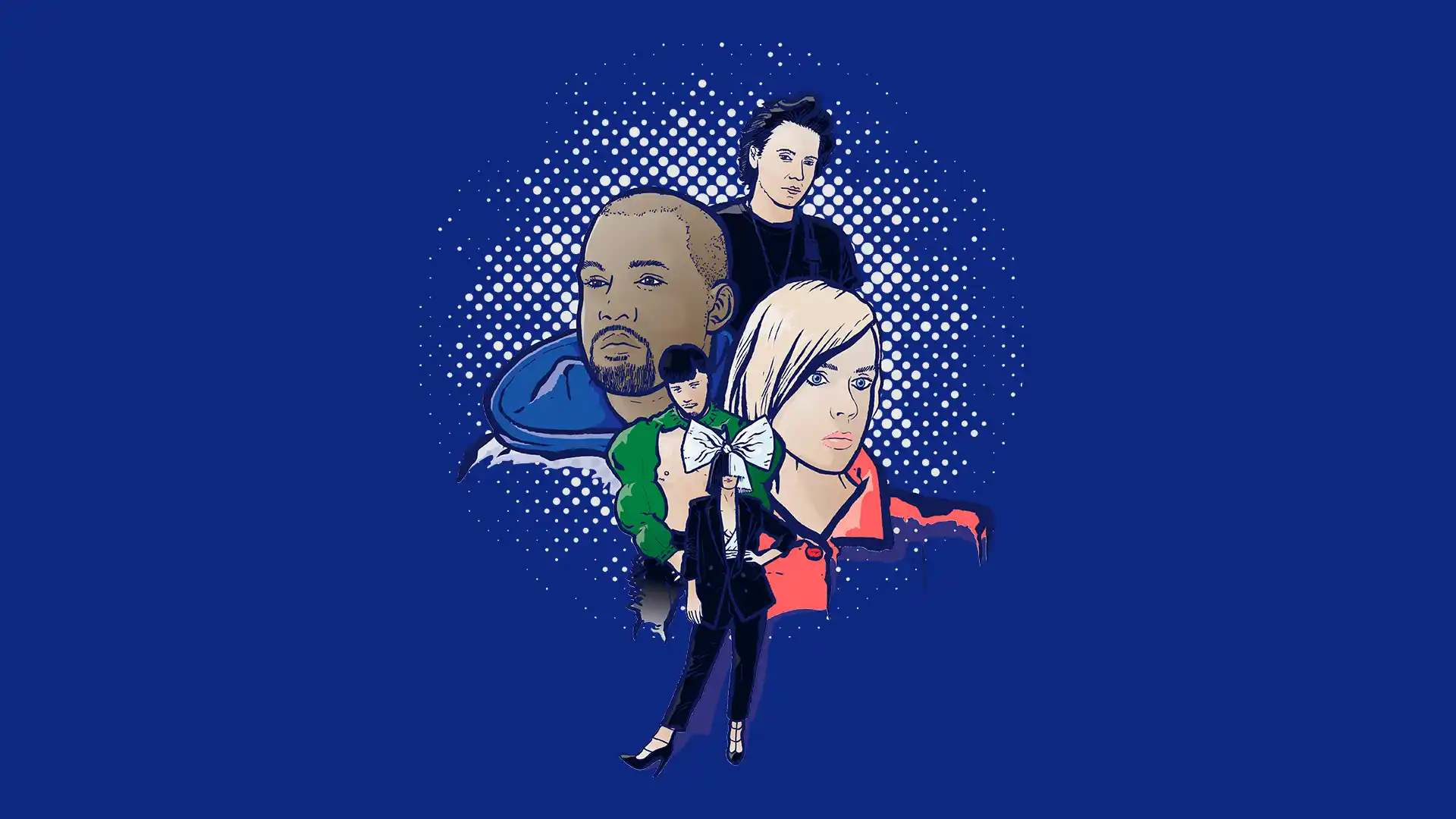
Favourite songs from the last decade
In this tenth edition of the Future Report all authors have chosen their favourite song from the last decade. Listen to them all on Spotify.
Kristin Skogen Lund, CEO
My favourite song the last decade: Formidable – Stromae
Sam Sundberg, Freelance writer, Svenska Dagbladet
My favourite song the last decade: Light years – The National
Sven Størmer Thaulow, EVP Chief Data and Technology Officer, Schibsted
My favourite song the last decade: Thinking of a Place – The War On Drugs
Ann Axelsson, Senior Product Manager, Strategic Communication, Schibsted
My favourite song the last decade: Paper Doll – John Mayer
Joacim Lund, Technology commentator, Aftenposten
My favourite song the last decade: Bråtebrann – Kverletak
Christopher Pearsell-Ross, UX designer, Schibsted Futures Lab
My favourite song the last decade: Your Best American Girl – Mitski
Ian Vännman, Strategy Advisor, Schibsted
My favourite song the last decade: I Don’t live Here Anymore – The War on Drugs
John Einar Sandvand, Senior Communications Manager, Schibsted
My favourite song the last decade: Save Your Tears – The Weeknd
Petra Wikström, Senior Director of Public Policy, Schibsted
My favourite song the last decade: Blinding Lights – The Weeknd
Sylvia Brudeli, Chief Product Officer, Nomono
My favourite song the last decade: Smilet i ditt eget speil – Chris Holsten
Hanna Lindqvist, SVP Technology, Schibsted and SVP Aurora Foundations
My favourite song the last decade: Wake Me Up – Avicii
Deng Wuor Joak, Head of Cyber Security, Distribution Innovation, Schibsted
My favourite song the last decade: Mamma Sa – Jonas Benyoub
Eivind Hjertholm Fiskerud, Project Lead AI, Nextgen Newsrooms
My favourite song the last decade: To Mminutter – Lars Vaular & Röyksopp
Andreas Cervenka, Columnist, Aftonbladet
My favourite song the last decade: Cairo, IL – The Brother Brothers
Karl Hahtovirta, Vice President Subscription Sweden, Schibsted
My favourite song the last decade: Get Lucky – Daft Punk
Moa Gårdh, Product och UX director, Aftonbladet
My favourite song the last decade: Ålen – Amason
Edgeir Aksnes, CEO and co-founder Tibber
My favourite song the last decade: Faded – Alan Walker
Nathalie Kåvin, Head of Corporate Brand, Schibsted
My favourite song the last decade: Stark & Sårbar – Moonica Mac
Camilla Buch, Communication Manager, Schibsted
My favourite song the last decade: Chronically Cautious – Braden Bales
Christine Gelfgren, Marketing Strategist, Schibsted
My favourite song the last decade: Yellow Moon – Amason
Markus Ahlberg, Chief Sustainability Officer, Schibsted
My favourite song the last decade: How Loud Your Heart Gets – Lucius
Christian Printzell Halvorsen, eCommerce & Distribution, Schibsted
My favourite song the last decade: Gospel (with Eminem) – Dr. Dre
Ricki Rebecka Petrini, Head of Marketing & Communications
My favourite song the last decade: Novacane – Frank Ocean
Adam Svanell, Head of Documentary, SvD
My favourite song the last decade: Mam Yinne Wa – Alogte Oho & His Sounds of Joy
Julie Schoen, Press Manager, DBA
My favourite song the last decade: Stor mand – Tobias Rahim and Andreas Odbjerg
Gard Steiro, Publisher, VG
My favourite song the last decade: I Need Never Get Oold – Nathaniel Rateliff & The Night Sweats
Lena K Samuelsson, Founder of Schibsted Future Report
My favourite song the last decade: Shallow – Lady Gaga & Bradley Coop
Molly Grönlund Müller, Community Researcher, IN/LAB
My favourite song the last decade: Step Out – José González
Belenn Rebecka Bekele, Community Researcher, IN/LAB
My favourite song the last decade: Son Shine – Sault
Tobias Brandel, Science Editor, SvD
My favourite song the last decade: Chandelier – Sia
Espen Rasmussen, Photo Editor, VG Stories
My favourite song the last decade: Golden Ticket – Highasakite
Enna Kursukangas, People & Culture Director, Schibsted Nordic Marketplaces
My favourite song the last decade: Cha Cha Cha – Käärijä
Michał Domagalski, Engineering Manager, Schibsted
My favourite song: Downtown – Unto Others
Nina Hermansen, Leadership Developer, Schibsted
My favourite song: Black skinhead – Kanye West
Karen Gonçalves, Global Process Owner – Employee On/Offboarding, Schibsted
My favourite song: Lady – Modjo
[Sassy_Social_Share]
Human happiness must be our common goal
“Human happiness must be our common goal”
She thinks we’re discussing AI on the wrong level. And her vision is that everyone should understand how the technology works. Inga Strümke has become a tech celebrity in Norway, much thanks to her bestselling book, “Maskiner som tenker.”
By Ann Axelsson

“Human happiness must be our common goal”
She thinks we’re discussing AI on the wrong level. And her vision is that everyone should understand how the technology works. Inga Strümke has become a tech celebrity in Norway, much thanks to her bestselling book, “Maskiner som tenker.”
By Ann Axelsson
“If you talk about existential risks and appeal to people’s fears, you will get attention,” she says, referring to the dystopian warnings that AI will replace humans and take all jobs.
“These futuristic scenarios are not constructive, and they make it hard to debate the mechanisms behind the technology. What we really need to discuss is how we can develop today’s AI systems according to legislation, our goals, and our values.”
Inga Strümke is an associate professor in AI at the Norwegian University of Science and Technology, NTNU. She’s also a particle physicist, a frequent public speaker, and a best-selling author. “Maskiner som tenker” (“Machines that think”) has become a bestseller in all categories in Norway.
She also spent several years reaching out to Norwegian politicians, trying to get them to take AI issues seriously. That was a challenge. Until ChatGPT.
“Unfortunately, it takes bad news to get them to listen.”
As a scientist in the field, she of course welcomes progress, and she explains that the scientist’s mindset is to think about what is possible and then develop that.
“That mindset has given us X-ray, GPS, the theory of relativity. And atom bombs. As a scientist, you never know how your findings will be used. That’s where society needs to step in.”

Inga Strümke has spent several years reaching out to Norwegian politicians, trying to get them to take AI issues seriously. She was also a speaker at Shibsted’s strategy summit in October 2023.

Inga Strümke has spent several years reaching out to Norwegian politicians, trying to get them to take AI issues seriously. She was also a speaker at Shibsted’s strategy summit in October 2023.
And she believes that ChatGPT is a perfect example of how bad things can go when you share “fun” new technology openly, without having had discussions about its implications.
“I believe we have a serious problem when pupils are now thinking, ‘Why should I write a text if there is technology that can do it better?’ How will we now make young people understand that an idea starts with a thought in your head and that you need to grow and communicate that idea to get other people to understand it? And if you can’t do that, then you won’t be able to function in society.”
That might sound just as dystopian as the future scenarios. But her point is that we can and we must take the lead here in the Nordics and in Europe when it comes to discussing the role we want technology to play.
“If we can’t manage to figure out how to use what we develop here, then we will end up using solutions developed by tech giants that we are unable to influence.”
Impact across the society
And these discussions, she says, should involve experts from across the board – politicians, social scientists, economists, legal experts, ethics, apart from technologists – since the impact will be felt across all parts of society.
This is also why she thinks it’s so important that as many of us as possible understand what this is about and how the technology works. The things she explains in her book.
“My dream is that anyone can read it. That a woman past 80 would read it and think, ‘I can understand this if I want to.’ I have this passion to empower people on this subject. To make them see that they can look after their own interests.”
New class issues
What also has become clear to her, in discussions after writing the book, is that AI can spur a new kind of class issue. That the world might be divided between those who are able to use the technology for their own benefit and those who aren’t.
“Someone said that AI will not take the journalists’ jobs. But journalists who know how to work with AI will take the jobs from the journalists who don’t.”
Inga got into the science world as a physicist. She wanted to understand the universe. Then, when she took her bachelor’s at NTNU, she noticed there was a field of study on artificial intelligence, and curiosity led her that way.
“My driving force is to find out what is possible. The main reason that I’m still in this field is that I see the consequences, and they are extremely complex.”
Even though she thinks about this complexity day and night, she also finds time to use that curiosity and energy on other things – mainly outdoor activities. Her social media is filled with pictures of her mountain biking, climbing and hiking. And those things are important.
“No matter what happens with technology and politics, there is one important thing that we can’t forget: to have a nice life. Human happiness must be our common goal – if not, nothing else matters. That’s very important to me to remember, every day.”
[Sassy_Social_Share]

Ann Axelsson
Senior Product Manager, Strategic Communication, Schibsted
Years in Schibsted: 25
My favourite song the last decade: Paper Doll – John Mayer
AI for good or for bad?
AI for good or for bad?
How will AI impact our lives and society? Joacim Lund compares it to the breakthrough that came with the internet – and sees many similarities. AI will solve many problems in our daily lives. We just need to make sure it doesn’t create new ones.
By Joacim Lund

AI for good or for bad?
How will AI impact our lives and society? Joacim Lund compares it to the breakthrough that came with the internet – and sees many similarities. AI will solve many problems in our daily lives. We just need to make sure it doesn’t create new ones.
By Joacim Lund
Artificial intelligence is a flop. Ok, not really. But we are talking about it the wrong way.
In Norway, an opinion piece from 1996 pops up on a regular basis. The headline of the newspaper clipping is crystal clear: The Internet is a flop.
Every time it appears, people have a good laugh. But the person who wrote it (incidentally, a reader I keep getting meaningful emails from) wasn’t irrational in his argument. He believed that people who work on computers will get more than enough of it during office hours (this definitely applies to some of us), that humans are social beings and, moreover, that it would not be profitable for business to offer their services online.
“When we rent our videos, we will visit the rental store and make our selection in visual surroundings,” he opined.
27 years later, much of the debate around artificial intelligence is not entirely dissimilar. People are either for or against artificial intelligence. They think it’s either good or bad. They think it will eradicate us or not. They want to stop it or let it be.

As new technologies arrive – the sceptics speak up. New habits sometimes take time to accept.

As new technologies arrive – the sceptics speak up. New habits sometimes take time to accept.
At the same time, AI developers from around the globe are creating autonomous weapons, racist algorithms and extreme surveillance systems that challenge human rights. Other AI developers are creating systems that revolutionise medical research, streamline the public sector, or help keep the temperature of the planet below boiling point. And everything in between.
The possibilities seem to be endless. So, shouldn’t we rather be talking about how AI can be used responsibly?
It’s changed everything
Today, everyone knows that the internet was not a flop. The authorities communicate with us using the internet. Ukraine and Russia are bombing each other using it. The propaganda war is almost exclusively waged online.
But perhaps even more importantly: the internet solves problems and has made life easier for most people. I charge my car online, pay bills and rent my videos (but sometimes I do long to go back to discussing movies with the movie nerd who worked on Bislet Video instead of getting flimsy recommendations by an algorithm).
I listen to my music online, remotely activate the heaters at the cabin, where I can also stream my news broadcasts. People find life partners online and discover like-minded people who also get excited by photography, old Italian scooters, 16th-century clocks, or Talk Talk bootlegs. We have access to everything, everywhere, all the time.
That’s why everyone laughs at the “flop” prediction. He was absolutely certain and he was wrong. But that’s easy to see in hindsight. And it’s hard to predict.
In 1996, people were concerned about Charles and Diana’s divorce and Bill Clinton’s re-election. Who could have imagined that Diana would die in a car accident in Paris a year later? Or that two years later, Bill Clinton would be explaining why his sperm was on a dress?
Or that the internet was going to change everything?
Tomorrow is only a day away
I have no idea how artificial intelligence will have impacted society, people and the lives we all live in 2050. But I see several similarities between the internet in 1996 and artificial intelligence today:
Artificial intelligence solves problems and will make life easier for most people. Artificial intelligence is changing assumptions.
Also for people who don’t have good intentions.
“Whoever takes the lead in this field takes the lead of the world,” Putin said during a live address to 16,000 schools at the start of the school year in the fall of 2017. By “this field” he meant artificial intelligence. Xi Jinping had recently launched an ambitious plan to make China a world leader in artificial intelligence by 2030.
It almost makes you want to just ban the whole thing. Impose international sanctions and throw the baby out with the bathwater. The problem is that artificial intelligence opens up so many positive possibilities as well.
Things like evaluating X-rays, AI can solve much faster and better than humans.


Things like evaluating X-rays, AI can solve much faster and better than humans.
The toe is broken
I was once playing with my son. I chased him around the apartment, arms straight ahead, like a zombie. As I made my way around the kitchen table, my little toe hooked onto a chair leg. There was no doubt that the toe was broken. It pointed straight out to the side. Still, I spent most of the day in the emergency room.
The reason for this was a bottleneck in the system.
When people come in with minor fractures or just a suspicion that they’ve broken something, for that matter, an X-ray is taken. A doctor (the bottleneck) must study each individual image to see if there is a fracture or not. If there is no fracture, the doctor sends the patient home. If there is a fracture, the patient is placed somewhere on a priority list.
However, minor fractures are not life-threatening. If there is a lot to do in the emergency room, the X-rays will be given low priority until there is more time to look at them. When the doctor finally has time, he or she will study the picture and determine that there is no fracture – in about 70% of cases. The patient, who by then may have waited seven hours, is then told to go home, take two ibuprofen and three glasses of red wine (which my dentist once recommended), and turn on Netflix.
It’s things like this that artificial intelligence can solve much faster and better. And it’s already doing it, actually.
Level up
The other day I was visiting a hospital in Bærum, just outside Oslo. An enthusiastic, young, bearded radiologist pointed to an X-ray image on a screen in front of us. The picture showed a foot, and it looked quite similar to the picture taken once upon a time of my foot (except that the little toe didn’t point straight out to the side).
But one thing was different. The image had been assessed by an artificial intelligence.
Above the ankle bone, a yellow square had been drawn, lined with the text “FRACT.” That means there’s a fracture there. The software goes through all the X-rays as they come in. Seven out of ten patients are told immediately that they can go home. The rest automatically end up in a priority queue.
Doctors do not have to spend valuable time finding out that everything is okay, and patients do not have to wait. This is an extreme efficiency improvement in a health service that will experience greater and greater strain in the decades to come.
Should this have been banned? Some think so.
Sense and sensibility
A few months earlier, two Norwegian politicians warned that artificial intelligence leads to everything from polarisation to eating disorders, and perhaps even the extinction of humanity. The government should immediately “impose a public sector moratorium on adopting new commercial tools based on artificial intelligence,” they argued.
This is an absurd approach to artificial intelligence. The pressure on the healthcare system only increases as people age. To have any hope of maintaining good health services for the population, we must make use of the tools at our disposal. The AI tool at Bærum Hospital happens to be delivered already fully trained from abroad. All patient data is deleted, so as to avoid all privacy issues. Of course, there shouldn’t be a ban on such things. But the two politicians still had a good point:
“The development of AI has for a long time taken place without adequate regulation from the authorities.”
Now it’s happening
There has been a Wild West approach from the tech companies. Naturally. Development is rapid, and work on laws and regulations is slow. But the EU has been working diligently on the issue.
The EU’s first draft regulation of artificial intelligence, the so-called AI Act, was presented two years ago. It is likely to be formally approved within 2023. The EU is adopting a risk-based approach. For services that pose a low risk, it’s full speed ahead. Unacceptable risk means it’s prohibited. And for everything else in between, there are two more levels: acceptable risk and high risk.
The purpose of the AI Act is to ensure that artificial intelligence systems are safe and respect fundamental rights and values. This means, for example, that facial recognition in public spaces is banned. It’s not allowed to single out citizens for the authorities to keep an eye on in case they do something illegal. Stuff like that.
AI should be open and honest, not closed and manipulative. The resistance the AI Act has faced from tech companies suggests that regulation is needed. For example, Sam Altman, the man behind OpenAI and ChatGPT, has threatened to pull out of Europe if the regulations become too extensive.
Perhaps now it’s time to revisit the crystal ball.
A willingness to solve problems
In September 2023, Norway’s Prime Minister, Jonas Gahr Støre, held a press conference where he proudly announced that his government would allocate one billion Norwegian kroner to artificial intelligence research, to be used over the course of five years. On the same day, the government leaked that it would spend five billion on a new tunnel to shave a few minutes off the drive between two villages in the mountains of western Norway somewhere. But OK, a billion is money too.
A large and important part of the research will focus on how artificial intelligence can be used for innovation in industry and in the public sector. Like in hospitals, when people come in with sore fingers and toes. Or in building applications, so people don’t have to wait several months for the overworked caseworker to get far enough down the pile. Or to provide public services with a faster, larger and better basis for decision-making. Or to improve data security, in fact, and not worsen it.
And in so many other ways that I can’t possibly imagine.
That’s what politics is all about. To follow social developments and govern society in a way that makes it as good as possible for as many people as possible. Norway is just an obvious example because that’s where I live. The same goes for every other country and continent, and globally, for that matter.
As in other areas of society, international resolutions and treaties and sanctions must be adopted to ensure that artificial intelligence is used in a way that solves humanity’s problems, rather than create new ones.
That work is underway.
OK, here’s what the crystal ball says
If I’m going to allow myself to try to look 27 years into the future, to 2050, I’d guess that people are more concerned about themselves and their nearest and dearest, and not so much about what people were thinking back in 2023. But those who bother to read old newspapers might chuckle a bit at the banal discussions we had about artificial intelligence ’way back when.’ And the fact that many were either for or against. Maybe it’ll be the demand for a ban and the call to halt development that everyone will laugh at (try asking Putin to stop the development of artificial intelligence, by the way).
I’m guessing that my future grandchildren will experience an education system much more attuned to each student’s learning disabilities, learning styles and skills. That their health will be taken care of much better than by the GP they see every two years. That potential health problems will be discovered before they become major and serious. I’m guessing the car will be a safer driver than the human. That public transport will be much better adapted to people’s needs. That precise weather forecasts will control the heating in houses. That everyone will be better protected from abnormal activity, whether it’s in their bank accounts or in their apartments. Maybe I won’t have to think about shopping for food or cleaning the house anymore.
I’m guessing it will seem strange that society spent so much time and resources on having people perform repetitive and simple tasks. And that major and important decisions were made on a razor-thin knowledge base.
I am absolutely certain that artificial intelligence will be subject to international regulations. And that artificial intelligence will lead to global, regional, local and personal changes that are difficult to imagine today.
Because by then humanity will know better.
If, of course, it still exists.
[Sassy_Social_Share]

Joacim Lund
Technology commentator, Aftenposten
Years in Schibsted: 18
My favourite song the last decade: Bråtebrann – Kverletak
On speaking terms with machines
On speaking terms with machines
We have interacted with our computers in mostly the same way for almost 60 years. But now we’re entering the age of conversational interfaces. Schibsted’s Futures Lab has experimented to understand more of their capabilities and constraints. The experience was surreal.
By Christopher Pearsell-Ross
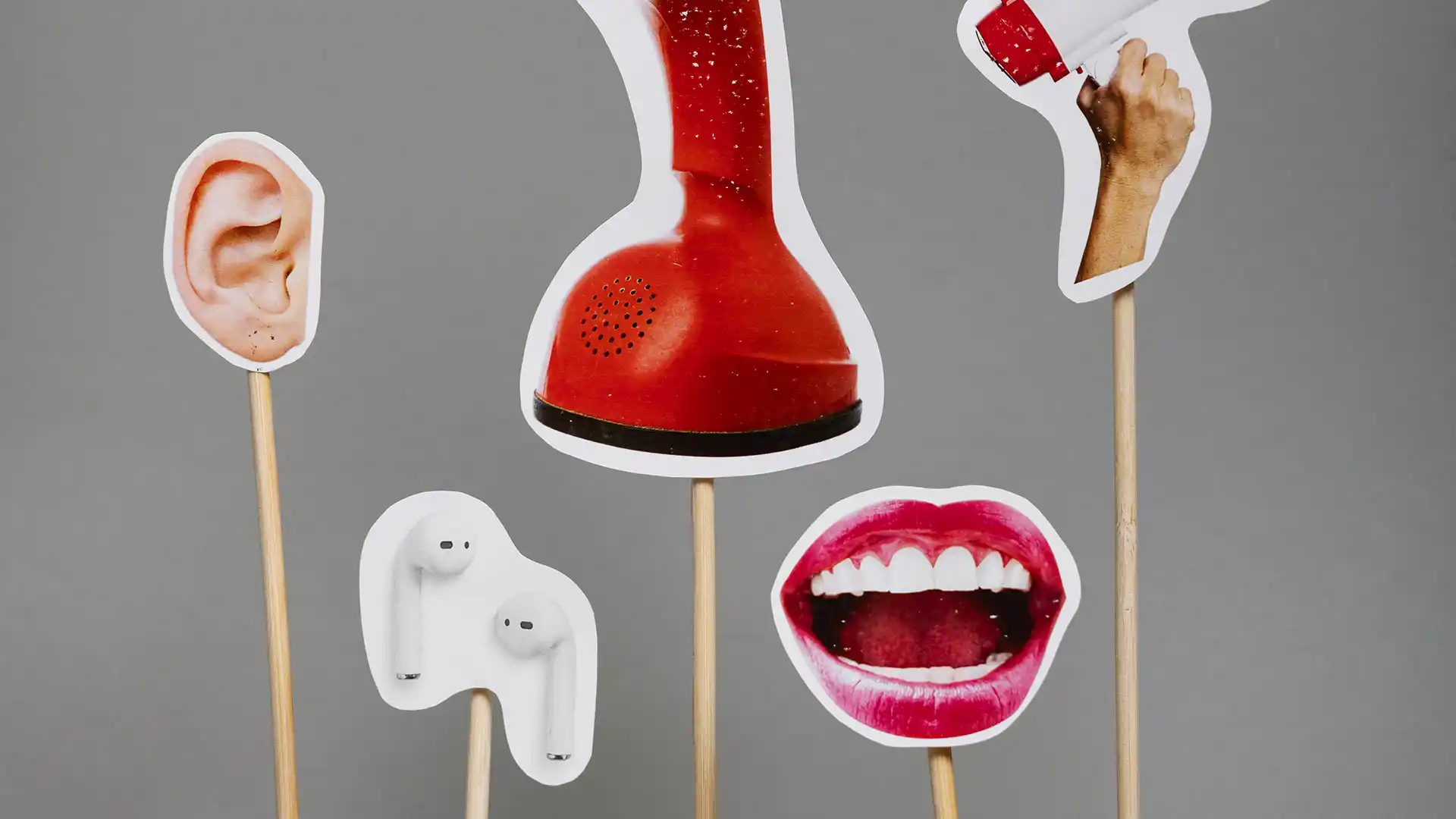
On speaking terms with machines
We have interacted with our computers in mostly the same way for almost 60 years. But now we’re entering the age of conversational interfaces. Schibsted’s Futures Lab has experimented to understand more of their capabilities and constraints. The experience was surreal.
By Christopher Pearsell-Ross
With the invention of the mouse in the 1960s, command-line interfaces gave way to a visual paradigm defined by graphical user interfaces (GUIs). Icons, menus and windows made computing more accessible to more people, and more applicable to a broader range of tasks.
In the mobile age, we have left our cursors behind in favour of the touchscreen. Now more than ever, we are reliant on visual metaphors to interact with our machines. We discover, create and explore our digital worlds with clicks and scrolls, taps and swipes, but this reliance on two-dimensional GUIs does not fully reflect our shared vision of how future technology should look.
These visions, exemplified by scenes in science fiction film and television, help define our shared expectations for what our technology should be capable of. In the future we are often shown, machines will speak and understand us. They will know us, anticipate our needs, and for better or worse, have the agency to act on our behalf. Large language models and tools like ChatGPT appear to be changing the paradigm again, bringing these sci-fi visions closer to reality.
Developed in 1964
These conversational interfaces are by no means new. Eliza, the first convincing chatbot, was developed at MIT in 1964 using simple pattern matching and rule-based responses. Siri was launched in 2011 as part of iOS using machine learning to recognise speech and to make sense of our intentions, letting many of us speak to our computers with our own voices for the first time.
But these interfaces have been limited to the responses and actions their programmers pre-defined. AI might have changed the input side of the equation, but these tools are still a lot closer to Eliza than we might care to admit. Advancements in AI technology over the last few years are radically altering this equation.
The introduction of generative AI, built on advanced neural networks called transformers, is reshaping the way our computers understand, process, and even create text. These AI models are what revolutionary new products like ChatGPT are built on, but they are also driving incredible improvements beyond text generation, including new capabilities in speech recognition, voice synthesis, sentiment analysis, image and video generation, and even the creation of 3D assets and animations.
In the year since ChatGPT was released, several key tech trends are shaping the future of conversational interfaces. Context windows are growing, essentially giving these tools longer memories and leading to more nuanced and relevant conversations. These tools are also getting connected to external data sources and digital services, enabling them to provide reliable and referenced answers, perform calculations and data analysis, and even take actions on behalf of the user. Lastly, as a recent release from ChatGPT shows, these tools are becoming multi-modal, meaning they are capable of processing not only text but also audio and images as both inputs and outputs, further expanding their versatility.

Until now, conversational interfaces have been limited to pre-defined responses and actions. AI is radically altering this equation.

Until now, conversational interfaces have been limited to pre-defined responses and actions. AI is radically altering this equation.
Aside from technology, social trends are also shaping this conversational paradigm. Firstly, populations in the developed world are ageing as birth rates decline, life expectancies increase and immigration and healthcare systems struggle to keep up. At the same time, feelings of loneliness and isolation are growing. In 2022, the number of single-person households in Sweden grew to over two million, and in 2023, the US Surgeon General warned of the public health effects of a growing epidemic of loneliness. Finally, in many parts of the world, education gaps are also growing. Inequities like racial, gender and economic disparities mean more people around the world are left out and left behind when it comes to the opportunities that education affords.
Taken together, we are seeing signs that point toward a future in which we increasingly rely on our technology for tasks and companionship that have traditionally been performed by people. There are opportunities and risks here. Conversational tools might enable new forms of healthcare and companionship services, give knowledge workers new superpowers or provide personalised tutors to children who need them. And they might also replace human connection, displace workers, or widen inequities.
Conversational user interfaces can bridge the best of what computers and humans have to offer.
While looking at hypothetical scenarios and possible outcomes is an important part of how we inform our strategy, our mission at Futures Lab doesn’t end there. To learn more about what we can and should do today, we need to get our hands dirty with practical experimentation.
Speculative prototyping is like a kind of time travel – it allows us to rehearse possible futures, and to experience what it might feel like to be there ourselves. In this case, we built a phone powered by ChatGPT to learn about how we might talk with AI-enabled devices in the future.
Inspired by science fiction examples like Samantha from the film “Her,” we set out to build an audio-only interface. Our goal was to explore the technical maturity, usability and applicability of CUIs in today’s landscape.
We scoured Finn.no for a suitable device to house our new tool and settled on a 1970s-era Ericofon 700. To provide a context for our experiment, we decided to explore workplace productivity and set out to design a weekly de-briefing tool to help us reflect on our work and keep our stakeholders updated.
We were able to use the original speaker but replaced the dialling mechanism and speaker with a Raspberry Pi minicomputer, new microphone and a proximity sensor so we could tell when the phone was lifted. Using OpenAI’s Whisper service for voice recognition, we sent a transcript of what users said to ChatGPT using a custom system prompt. This prompt helps GPT know how to respond, what role to play and which tone of voice to use. Finally, the system’s response is played back to the user using Google Cloud text-to-speech functionality.
The result was compelling and eerily similar to some examples from science fiction. While you still need to take turns speaking and listening, the conversation flows fairly naturally. Our AI agent can ask highly relevant follow-up questions, keep the conversation on-task and help users reflect on their work in new ways. Once the system determines it has enough information (usually after a few minutes of back-and-forth conversation) it writes a summary for the user, which it can either re-write or submit to a database at the user’s instruction. From there the summaries can be used in any number of ways, from providing a searchable archive of our progress to creating tailored newsletters and Slack updates.
The audio-only experience allows us to assess what actually speaking with our machines in open-ended, flowing conversations might be like, without relying on the graphical and visual indicators we normally use.
Using these new interfaces has been as informative as it has been surreal. The scenes from “Her” and “Star Trek” that we took as inspiration are very quickly becoming reality. Testing prototypes like this can help us understand the capabilities and limitations of the technology, how to design usable products, and where and when CUIs are an appropriate choice.
Impressed with the quality
The people who have tested our phone interface were impressed by the overall quality of the conversations and the relevance of the follow-up questions. Being able to go off-script and have an actual voice conversation with a computer has been revelatory, though not without its frustrations.
Audio-only experiences are clearly outliers, but prototyping in this extreme format and comparing the experience to conventional chatbots has highlighted some important usability considerations. The things we may take for granted when using well-designed GUIs – namely, seeing the system status, understandable actions with clear icons and buttons, and information hierarchies that prevent cognitive overload – become more complicated when we only have our ears to rely on.
When it comes to usability and user experience, user preferences are strongly divided between the audio and text-based interfaces. Some users felt the intimacy, distraction-free focus, and ability to speak plainly without pretension or self-editing created a novel experience, one in which they were prompted to reflect and share a sense of openness and safety. Other users expressed a strong preference for text-based communication. They cited the efficiency of typing, the ability to refer to questions and previous answers, having time to formulate and edit their responses, as well as the ability to read and paste in other materials as important factors for them.
An important consideration in both text and audio-based CUIs is expectation management. These tools have come a long way and are able to converse at such a high level that many users will expect them to have capabilities and understandings far beyond their current capabilities. We can blame this partly on the quality of synthesised voices available today – the more human the system sounds, the more human we expect it to behave.
ChatGPT and other conversational tools like it are already demonstrating two key superpowers. First, they are great conversationalists and interviewers – they are able to understand our meaning clearly, provide tailored answers, and ask highly relevant questions. They are also able to translate human language into data consumable by machines, and to take complex data and translate it back into comprehensible human language.
We see these tools being most useful in contexts in which both of these abilities can be leveraged. Obvious applications include games and interactive media, personalised content production in news media, customer service, sales and product discovery. They are already proving highly useful as task-specific assistants in programming, research and data analysis, and we expect them to be applied as pervasive personal assistants and tutors in the very near future. Less obvious, and perhaps more far-fetched and ethically challenging, applications include AI therapists, healthcare advisors and personal companions for the vulnerable.
Combination of superpowers
Conversational user interfaces can bridge the best of what computers and humans have to offer. They can leverage the high-speed data analysis and computational superpowers of computers while making sense of the messy, creative and intuitive understanding we have as humans. In the best-case scenario, this combination of superpowers will help make the world more accessible to people with visual and cognitive differences, help make education more accessible and tailored to individual needs, increase our productivity at work and free up more of our time for the things that truly matter. On the other hand, these tools also have significant potential to disrupt labour with new forms of automation and to create emotionally impactful, biased content that drives further social isolation, misinformation, and inequity. The reality is that both scenarios are likely to coexist.
This is a rapidly changing landscape and things we thought of as science fiction are already becoming reality. We can’t predict the future, but through foresight and experimentation, we can better prepare ourselves for the changes, challenges and opportunities that are coming. That’s the approach we try to take at Schibsted’s Futures Lab. We are seeing a new paradigm of interaction on the verge of being born. CUIs have incredible potential to empower people in their daily lives… if we can get it right.
This text was human-generated by the Futures Lab team. ChatGPT was used as a sparring partner and writing critic throughout the process. Special thanks to our summer intern Lucía Montesinos for driving much of this work.
[Sassy_Social_Share]

Christopher Pearsell-Ross
UX designer, Schibsted Futures Lab
Years in Schibsted: 2.5
My favourite song the last decade: Your Best American Girl – Mitski
Applying AI in Schibsted
Applying AI in Schibsted
At Schibsted, we experiment and work with AI in all our business areas. These are some examples of applications that have improved the way we work and our products.

Applying AI in Schibsted
At Schibsted, we experiment and work with AI in all our business areas. These are some examples of applications that have improved the way we work and our products.
Video-subtitles
Over the last few years, the demand for subtitled videos has increased due to accessibility needs and because more and more users watch videos without sound. But the manual timing and writing of subtitles take a lot of time. With the help of the OpenAI-model Whisper, video editors can now upload videos to a service built by the Aftonbladet TV Operations team and it will automatically generate subtitles. These subtitles can then be used in Adobe Premiere.
“The subtitles still need to be edited in Premiere a bit to fix minor errors, but the time gained is enormous, which creates more time for other tasks in the newsroom,” says Vasilios Hatciliamis, Head of TV Operations at Aftonbladet.
Language model
In a small cabin during summer vacation 2023, a Schibsted LLM was born. Simen Eide and Anders Haarr from AI foundations in Schibsted started training a model with Schibsted content to create SEO optimised headlines for Schibsted newspapers. It turned out to be five times as good at the job than ChatGPT and other open-source models. So far it’s been tried out on VG but the internal interest to use it is big. The ambition is also to implement it on other products in Schibsted, like marketplace brands, but exactly where this will go is not decided.
“It’s really cool that we are able to work on a project like this, without a final goal,” says Simen. ”I think that’s thanks to the culture of innovation that we have in Schibsted.”
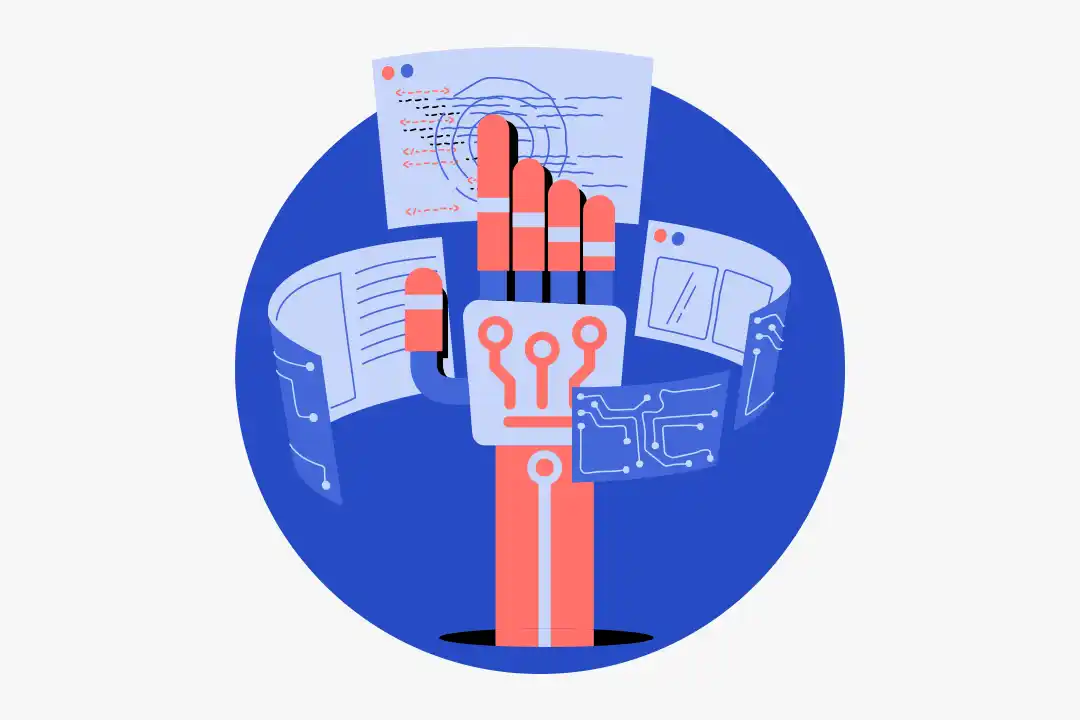
AI helps engineers in Schibsted to write code.

AI helps engineers in Schibsted to write code.
AI helps with writing code
Hundreds of software engineers in Schibsted now use artificial intelligence to help them write code. “My productivity has grown at least 15%,” estimates one of them, Pedro Goncalves.
Good software engineering requires lots of creativity as well as superb skills in solving problems. But the daily work is also full of tedious and repetitive tasks. There are tests and failures as new code is produced – and it all takes time and energy.
That’s why, after a pilot project, Schibsted decided to let all its software engineers use the AI tool GitHub Copilot in their daily work. GitHub Copilot is like a ChatGPT for programmers, it just suggests software code instead of normal text.
After only a few weeks, 34,000 lines of code had been accepted by the software engineers. (By comparison: some estimate that an average programmer writes about 25,000 lines of code in a year.) And nearly 400 programmers have already started using it.
Indexing offers at Prisjakt
At Prisjakt, a price comparison service within the Schibsted family, machine learning (ML) plays an integral role in their ever-so-important product matching system.
The system utilises ML algorithms, such as neural networks, natural language processing (NLP) and computer vision methods, that support the categorisation of items from shops and matches the items to Prisjakt’s database of products, called “product matching.” This is a redundant system that evaluates several inputs, such as text and images from the product descriptions, along with the price.
There are almost 300 million items to process in the system and millions are matched every day, effectively reducing the need for manual labelling for just a small group of people.
Manual labelling combined with the creation of new products helps to continuously improve the performance of the ML models, which results in more product matches. For the users on Prisjakt’s site, this results in a seamless experience as they search for and compare products, ultimately enhancing the shopping experience and driving more traffic to the shops.
Overall, Prisjakt’s well integrated ML solutions for automated product matching serve as a competitive advantage, as well as being the backend for the price comparison service.
A feature built with GPT-4, creates short summaries of news articles.


A feature built with GPT-4, creates short summaries of news articles.
AI-generated summaries
On VG, Aftonbladet and Aftenposten, readers can get short summaries of news articles. This is a feature built with GPT-4, created by a cross-brand team in Schibsted. When an article is ready, the journalist simply toggles on the functionality in the content management system, and a summary is generated. The journalists can then review it and hit ‘publish’ when it’s ready.
To make sure that mistakes do not slip through the cracks – there is an extra safety mechanism. The team behind it has asked GPT-4 to double-check that the text and the summary are aligned before it’s published, using text classification. And the readers like it. The overall click-through rate on VG’s summaries is 19%, and for young readers, it’s 27%. You might think that there is a risk that these readers don’t read the whole article – but it turns out that they often do. They simply use the summary as an introduction.
Transforming sound to text
When software engineer Johannes Andersen had lunch with a VG colleague who was moaning about having to transcribe an interview, he was sympathetic but didn’t think more about it until he saw a forum post about the OpenAI model Whisper. Then he tried the model out on a hack day and it turned out to work very well.
As it became clear how much time the tool could save, Johannes Andersen and his team invested three weeks to work on an application. They’ve built an interface and an app where journalists can upload their sound files and turn them into texts. At the time of writing, a few months after launch – the web application has saved 13,433 hours for journalists who can now use that time to do other things.
You can use it for several languages and the word error rate is 9.5% for Norwegian and only 4.2% for English. With the app, the journalists can work locally on their computers, so they don’t have to share any data.
A way to listen to all articles
In the last Schibsted Future Report, we told the story about Aftenposten’s synthetic voice. In cooperation with the company BeyondWords, a team from Schibsted’s subscription newspapers trained an artificial voice, using sentences from published articles that were recorded by podcast host Anne Lindholm. Since then, the project has grown. Now you can listen to most articles published on Aftenposten.no. And soon there will also be playlists with recommendations for articles to listen to.
At Aftenposten Junior, where the project started, you can choose between nine different languages, including Arabic, Ukrainian and Somali. And more newspapers in Schibsted are on their way to implementing the technology. But this project is not only about convenience. It’s also a question of giving everyone access to the same information.
“For instance, we learned from teachers that 92% of them have students who struggle to read in their classrooms,” says product manager Lena Beate Hamborg Pedersen.
[Sassy_Social_Share]
Unleashing the potential of AI in news
Unleashing the potential of AI in news
In the fast-paced digital world, the news media industry stands on the brink of a revolutionary shift. AI will shape the future of journalism and content creation. Ian Vännman from Schibsted Futures Lab predicts several phenomena that will drive the transformation, as he looks into the technology behind it.
By Ian Vännman

Unleashing the potential of AI in news
In the fast-paced digital world, the news media industry stands on the brink of a revolutionary shift. AI will shape the future of journalism and content creation. Ian Vännman from Schibsted Futures Lab predicts several phenomena that will drive the transformation, as he looks into the technology behind it.
By Ian Vännman
AI is the catalyst for a transformational wave that’s redefining our reality, akin to the monumental changes brought about by the birth of the microprocessor, the emergence of personal computers, the spread of the Internet, and the ubiquity of mobile phones.
To comprehend this future better, the Schibsted Futures Lab team delves into and explores recent technological advancements. We function as scouts, scanning beyond the Schibsted horizon and using our insights to influence our colleagues to apply emerging technologies in our businesses. We also identify and examine smaller breakthroughs, as they provide clues about plausible futures.
Breakthroughs that spark innovation
History has taught us that seemingly minor technical breakthroughs can spark innovations that, over time, dramatically reshape our world. Consider, for example, Intel’s creation of the microprocessor in 1971. This paved the way for Apple to launch the personal computer in 1977. The convergence of these technologies with Stanford’s invention of TCP/IP, the networking protocol that forms the backbone of the internet, truly took off when the World Wide Web became globally popular with Netscape’s introduction of its web browser in 1994. These innovations, combined with the GSM digital mobile networking standard developed in Europe in 1987, led to the birth of the smartphone.
Thus, minor breakthroughs converge with other advancements and innovations to generate new innovations that, over time, revolutionise the world.

History has taught us that seemingly minor technical breakthroughs can spark innovations that, over time, dramatically reshape our world.

History has taught us that seemingly minor technical breakthroughs can spark innovations that, over time, dramatically reshape our world.
Recently, the Futures Lab team has been delving into groundbreaking technologies such as neural radiance fields (NeRFs) and diffusion models. NeRFs is an impressive AI-based technology that allows us to construct 3D environments using only 2D images. In essence, it enables us to use standard cameras to generate 3D objects and environments, as showcased in Luma’s apps. Diffusion models are being used to create artistic and lifelike images with only text as input, as seen in applications such as Midjourney, Dall-E, and Stable Diffusion.
While these technologies are impressive in their own right and seem almost magical from a user perspective, they pale in comparison to the innovations spurred on by the transformer architecture. This technology, developed by Google in 2017, now underpins all the leading chat-based AI services, such as ChatGPT, Anthropic’s Claude, Google’s Bard and Meta’s open-sourced Llama.
The real magic
The transformer architecture is leveraged to create large language models, often referred to as LLMs. These LLMs are trained on enormous volumes of text data, enabling them to form artificial neural networks that capture and store patterns from the data. The real magic lies within these LLMs. To draw an analogy, if ChatGPT were a car, the LLM would be its engine.
Building on the transformer architecture, OpenAI introduced another breakthrough: a new type of LLM known as Generative Pre-trained Transformers, or GPT, as in ChatGPT. Fast forward to 2023, OpenAI and its contemporaries have enhanced GPT with the ability to build tools. In simpler terms, GPT can now generate and execute code to accomplish tasks.
The advancements we’ve made in the past 50 years will likely pale in comparison to what we’ll achieve in the next 50 years, or even the next 15 years.


The advancements we’ve made in the past 50 years will likely pale in comparison to what we’ll achieve in the next 50 years, or even the next 15 years.
Several academic studies have already explored the impact of using ChatGPT across various professions, including law, customer support, programming, and creative writing. The consensus is clear – AI significantly enhances the productivity of lower-performing individuals, enabling them to accomplish more with better quality. High performers see less improvement, and in some cases, even a drop in productivity. Interestingly, early indicators suggest this productivity boost is consistent across many, if not all, white-collar disciplines.
This can be attributed to two primary factors. First, chatbots have become remarkably adept at simplifying complex tasks. Second, Gen-AI enhances creativity. While there’s ongoing debate in the scientific community about whether large language models can truly be creative, from a productivity standpoint, this is a moot point. After experiencing ChatGPT’s “creativity,” it’s clear that it’s quite adept at it.
Something bigger
But is the so-called AI revolution merely about increasing productivity by using ChatGPT and its counterparts in office work? Or is there something bigger at play here?
Comparing the CPU, the central processing unit of a computer, with the human brain, we find that they complement each other remarkably well. The CPU excels at rapidly executing instructions provided in code with structured data – tasks that humans find challenging.
Conversely, we humans excel at learning, a capability entirely absent in a CPU. We possess agency, intuition, creativity, and are multi-modal, meaning we process input and output through most of our senses.
The LLM sits somewhere between these extremes. It’s as fast as a CPU, but also capable of learning in the sense that it can be trained and fine-tuned. It possesses contextual understanding, a characteristic more akin to our brains than a CPU.
Low costs
The key takeaway is that we now have access to human-like intelligence at nearly zero cost. It’s more than just about chatbots. Large language models enable us to infuse human-like analysis, creativity, decision-making and more into workflows and processes at virtually no cost.
With this perspective, the advancements we’ve made in the past 50 years will likely pale in comparison to what we’ll achieve in the next 50 years, or even the next 15 years, for better or worse.
How can all of this play out more concretely, in one of Schibsted’s core business areas – news media?
The answer to this is that its practical implications will be vast and far-reaching. The expected transformations will challenge the very core of our traditional business models. To grasp the full breadth of AI’s potential impact, let’s first consider the fundamental business structure of the industry.
Most online businesses can be simplified into three core activities:
- Creation of goods
- Customer acquisition
- Distribution of goods
- From a financial perspective, these activities respectively translate into:
- Cost of goods sold
- Sales and marketing expenses
- Other operating expenses
Historically, the advent of the internet drastically reduced distribution costs in the news media, triggering substantial shifts in how content reached consumers and removing most barriers to entry into the market. Now, as we usher in the era of AI, we stand on the precipice of another profound change: a potential collapse in content creation costs. The ramifications of such a shift could be as transformative, if not more so, than the internet’s earlier influence on the business models and the broader industry landscape. In the short term, I predict several phenomena that are set to drive our transformation:
Democratisation of programming
Anyone can develop software using tools like ChatGPT and Replit. All it requires is a bit of curiosity and courage. This democratisation signifies not just more efficient programming, but an increase in the number of programmers, which will further accelerate digitalisation and innovation. As Sam Altman, CEO of OpenAI, puts it:
“I think the world is going to find out that if you can have ten times as much code at the same price, you can just use even more.”
Automation of content creation
Content with predictable production processes and performance, often format-driven, such as news summaries, listicles and interviews, will likely be generated either entirely by AI or more commonly in collaboration with journalists.
Unbundling of research and narrative
Traditionally, journalism involved researching facts and weaving them into a cohesive narrative. With AI, we can separate these processes. For instance, we can publish research material alongside articles, enabling readers to explore the underlying research through an AI-driven chat interface. Newsrooms may even have teams dedicated solely to establishing and verifying facts and other information building blocks, which are then used to automatically create content using AI.
Writing of previously unwritten stories
Many individuals possess important stories that remain untold due to a lack of competence in content production. With AI, these barriers between lower and higher performers are reduced, allowing many more voices to be heard.
Personalised consumption
Every individual has unique consumption preferences. With AI’s ability to transform text into various formats, we can cater to these individual needs more effectively, especially when mastering the arts of unbundling research and narrative, as well as the automation of content creation.
With the collapse in costs and barriers in distribution and content creation, customer acquisition becomes the primary competition area for both new and incumbent brands.
To succeed in this new paradigm, I’ve identified at least four distinct, but not mutually exclusive, strategies that news media brands can deploy.
1. Creating an addictive product
Develop a service so engaging that it captures users’ attention far more than traditional news outlets. The prime example is TikTok, which holds users’ attention for an average of 90 minutes daily. Achieving this is extremely, challenging, likely impossible, but the payoff is tremendous if accomplished.
2. Fostering a movement
Tap into deeper emotions such as fear and hope to capture audiences’ energy and passion, generating extraordinarily high engagement and loyalty. Fox News, for better or worse, has done this. There is no doubt that in these times of high uncertainty, audiences are yearning for hopeful narratives.
3. Nurturing a trusted brand
This is the go-to strategy for established brands. Establishing and maintaining credibility in an era of information overload should be rewarding. However, in a future hostile media landscape, no matter how strong the brand is, brands will require greater degrees of discipline, transparency, and accountability than before.
4. Building a community
In a world of increasingly personalised experiences, individuals will seek shared interactions and rewarding experiences. This insight isn’t new for news media, but most previous attempts to build communities encountered scaling issues as the community grew, leading to its downfall. This paradox may be resolved if we can leverage AI to address the challenges that arise as the community expands.
Technology of the present
AI is not a technology of the future anymore; it’s very much a technology of the present. Every media organisation must actively engage with AI tools and platforms. Training your teams on platforms like ChatGPT or similar AI tools can lead to innovative storytelling techniques, streamlined content production, and a deeper understanding of audience behaviour.
On a personal level, embracing this new paradigm means integrating AI into your daily routine. You need to incorporate it into your life to such an extent that you automatically turn to it whenever you face challenges that require collaboration, or that can be solved faster and more effectively than you or your colleagues can do on your own. Only when it becomes an integral part of your life will you be able to fully understand it and its potential.
Rethink the pipeline
The barriers to software development are being lowered every day. Embrace this democratisation by encouraging your teams to experiment. Host internal hackathons or workshops. Foster a culture of prototyping; this not only breeds innovation but also promotes a fail-fast mentality in which learnings are quickly integrated.
With AI’s capabilities, media organisations have the opportunity to rethink their content production pipeline. Centralising certain production elements can help maintain consistency while leveraging AI can ensure content is tailored to audience preferences. Moreover, AI can assist in identifying content trends and predicting audience interests.
The transformative power of AI in the journalism industry is undeniable. We stand at a crossroads, facing a horizon with enormous uncertainty, limitless opportunities and inevitable challenges. The technological power that AI presents has profound implications on how we produce, distribute and consume news. As AI shapes a new paradigm for humanity, it becomes imperative for the journalism industry to not just adapt but lead the way. By wholeheartedly embracing AI, media brands can redefine their narrative in this new era. This journey won’t be without pitfalls, but the rewards – both for the industry and society at large – are immense. The future of journalism, powered by AI, awaits.
[Sassy_Social_Share]

Ian Vännman
Strategy Advisor, Schibsted.
Years in Schibsted: 23
My favourite song the last decade: I Don’t live Here Anymore – The War on Drugs
Help! My smartwatch became a PT from hell
Help! My smartwatch became a PT from hell
Optimising your body and mind has never been easier. But is it really that healthy to measure our health down to every heartbeat? Wearable technology, pressure to perform, a growing wellness industry and AI are becoming a toxic cocktail.
By Tobias Brandel

Help! My smartwatch became a PT from hell
Optimising your body and mind has never been easier. But is it really that healthy to measure our health down to every heartbeat? Wearable technology, pressure to perform, a growing wellness industry and AI are becoming a toxic cocktail.
By Tobias Brandel
“People are so self-absorbed.” My mothers’s reaction when I showed her which of “my” articles had performed best lately was not quite the maternally, uncritical praise I had expected.
Last autumn, I took on the role of science editor after several years as head of Svenska Dagbladet’s political coverage. To clarify what type of articles I am now editing, I showed her a recent summary of successful headlines from the managing editor’s endless collection of PowerPoint presentations. Among them: “You control the success of your child – but not the way you expect”, “Mediterranean eating habits beat all other diets in the long run” and “Henrik, 42, follows the most effective method of weight training according to research.”
A slightly more refined way of expressing my mother’s nevertheless rather sharp observation is that SvD’s science coverage focuses quite a bit on “useful science.” Stuff that helps people in their daily lives.
People want to perform in all areas
Our readers are interested in their own well-being and development; in health, nutrition, fitness, psychology and the process of learning.
These days, this type of journalism accounts for notably large sections of international news sites such as The New York Times and The Washington Post. People want to perform in all areas of life – career, family, leisure time, health.
As a freshman science editor, I soon discovered the role also included the specific requirement of presenting new scientific findings in the area of fitness and training every week. A slightly prejudiced – and totally incorrect – idea of the type of fitness articles that should work in a “Grey Lady” newspaper like SvD would be… well, home exercises for seniors.
However, I quickly came to the realisation that, in terms of their physical status, our fitness-interested readers perform well above the average exerciser, aiming for the elite. Articles on heavy gym workouts are appreciated the most.

When McKinsey recently published a special report on the wellness industry, it was valued at 1.5 trillion USD, with an annual growth rate of 5–10%.

When McKinsey recently published a special report on the wellness industry, it was valued at 1.5 trillion USD, with an annual growth rate of 5–10%.
Overall, SvD’s fitness pieces are often the best performing of all articles on the site during the day of publication, regardless of which indicators you look at – subscription sales, page views among existing subscribers, scroll depth and so on. At least in January (New Year’s resolutions must be fulfilled!), May (dawning beach panic!) and August/September (time for a fresh start after a wine-soaked holiday…).
The pattern is similar when it comes to the many articles we publish on research related to nutrition and diet. How should I eat to be as healthy and enjoy as long a life as possible?
Turning our gaze from the newspaper industry and looking more broadly at the tech sector, there is perhaps one small gadget above all else that is driving developments in terms of people’s persistent struggle to improve themselves.
The annual trend survey “Worldwide Survey of Fitness Trends” from the American College of Sports Medicine is something of a bible in the fitness industry. The top spot in 2023 went to wearable technology, a term that has consistently placed itself at or near the top of the survey results each year since it was first introduced on the list in 2016. By no means a coincidence, the first version of Apple Watch had been released on the market one year earlier.
The next phase is around the corner
Heart rate monitors and more basic types of fitness trackers have, of course, been around much longer than that. But as usual, it was Apple who perfected the concept and raised the bar with its version of the smartwatch, which quickly became the market leader.
Now the next phase of the wearable technology revolution is around the corner, with the AI hype reaching this sphere.
The spreading of rumours regarding Apple’s upcoming products is, in itself, something of a journalistic genre. Much of the recent speculation has concerned an “AI-based health coach” for Apple Watch. No such innovation was to be seen when the latest version was released in September 2023, but the likelihood is that it will appear in 2024, or perhaps it will have already launched by the time you read this.
The 2023 top spot in the annual “Worldwide Survey of Fitness Trends” from the American College of Sports Medicine went to wearable technology.
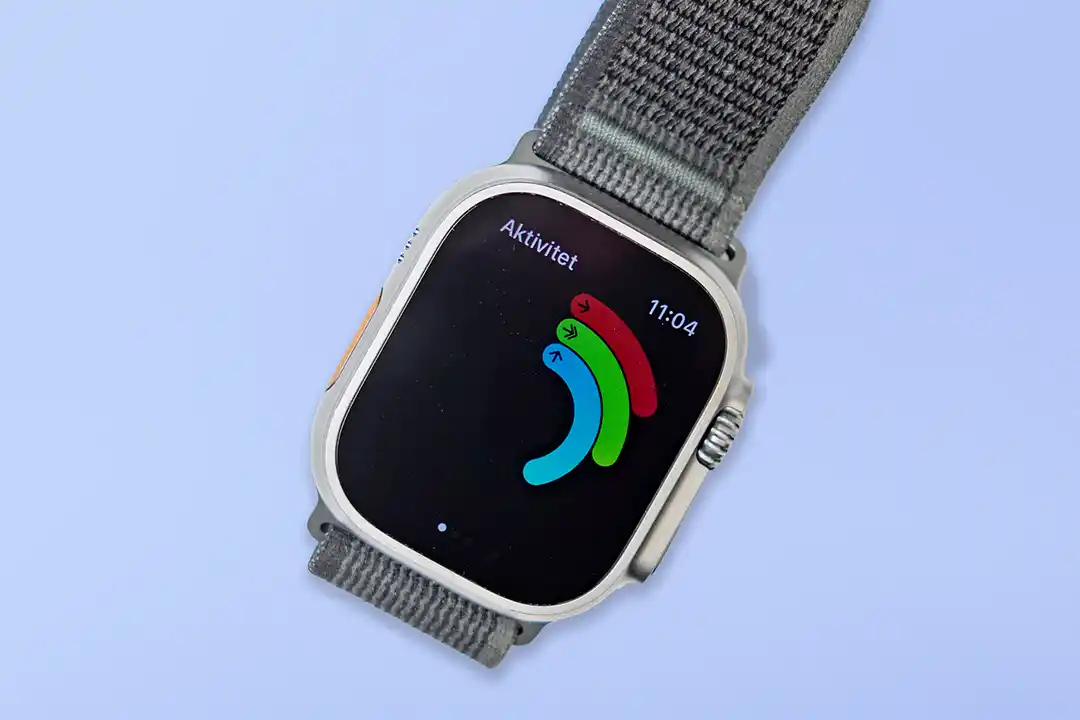

The 2023 top spot in the annual “Worldwide Survey of Fitness Trends” from the American College of Sports Medicine went to wearable technology.
The Apple Watch has evolved into a rather impressive health product in recent years. Today, it can measure your heart rate, body temperature, how much time you spend sleeping and standing, calculate the amount of calories you burn, and so on. Furthermore, the most advanced versions are also able to execute an ECG, measure your blood oxygen level and calculate your menstrual cycle. However, in these areas, the scientific evidence is more dubious (Apple provides a disclaimer in the footnotes that these functions are not for “medical use”).
AI technology is, of course, already being applied. For example, Apple uses machine learning to detect irregularities in heart rate or if the wearer is involved in a serious car accident (whereupon the watch automatically calls the emergency services).
Future areas
Some potential future areas of development for artificial intelligence in wearable technology include:
Detecting a range of health problems – acute or long-term, physical as well as psychological – by studying patterns, deviations and trends. It may also be possible to provide healthcare professionals with assistance in making diagnoses.
Creating personalised training, dietary and treatment programs based on each individual’s unique metrics and biometric data.
Motivating people to adopt a healthier lifestyle through smart forms of encouragement.
There are plenty of fitness apps for mobile devices that help you train and exercise on your own, based on video and audio instructions. But unlike a human personal trainer, such apps don’t tell you when you risk hurting your back doing heavy squats, or when your down dog is way too crooked. A number of companies are now experimenting with wearable technology in this regard, i.e. the use of built-in sensors to guide the user and provide feedback. The aim is to ensure that we don’t just exercise – but that we exercise in the right way.
Alas, personal trainers could soon join journalists and other professionals who have reason to worry about being replaced by an AI in the near future.
Nevertheless, there are still many things that smartwatches are far from mastering. The area of nutrition and diet, for example, is far more complex than simply measuring physical activity.

Perhaps the pedometer is the vote compass of wearable technology? In other words, the only digital service we really need.

Perhaps the pedometer is the vote compass of wearable technology? In other words, the only digital service we really need.
Nutrition research is sometimes subject to criticism for methodological issues. For practical reasons, scientists are constrained to execute observational studies and to rely on people’s own information regarding their dietary habits. The problem, of course, is that people – whether due to forgetfulness or embellishment – don’t always do what they say they do.
The problem, of course, is that people – whether due to forgetfulness or embellishment – don’t always do what they say they do.
And it is difficult to distinguish between cause and effect in these types of studies – or what is simply genetics, rather than habits.
An increasing amount of research also suggests that how we are affected by our diet is highly individual (which explains why individuals who have achieved success with a certain diet – be it low-carb, intermittent fasting or something else – are so eager to tell the world). There quite simply isn’t one diet that suits everyone.
AI has enormous potential
Here, artificial intelligence could have enormous potential when it comes to cracking the individual code. Exactly how should I, out of all billions of people, eat in order to be healthy? But more advanced measurement methods are also required. Blood sugar meters will be a key component. Google, among others, has conducted research into contact lenses that can measure the glucose level in tears.
If we adopt a full-blown science fiction perspective, Apple Watch and the likes from Samsung, Fitbit and other manufacturers are probably just one step on the path to a future reality in which we have a chip implanted directly into our body, or nanobots injected into our bloodstream.
But enough for now about the technological developments – what are the human drivers behind this accelerating monitoring of ourselves?
Perhaps it’s not really all that remarkable. All high-performing, self-absorbed people have simply been presented with yet another way to measure their success in life. Society’s constant pressure to perform, literally strapped around your wrist.
Extremely frustrated
Most smartwatches are pretty good at detecting when you consciously or unconsciously engage in some form of physical activity, such as walking or cycling. They discreetly buzz to suggest that they should start monitoring your current training session. I myself get extremely frustrated when I have commenced a walk or gym workout and realise that I have forgotten to put on my watch. If the exercise isn’t registered then it hasn’t happened!
The most amusing experience occurred a few years ago when I was taking my two children to preschool, and the Samsung watch I was wearing at the time asked me if I was engaged in high-intensity interval training.
Nowadays, as soon as there is a trend change in my physical performance, I receive a notification from my Apple Watch: I have exercised 27% more this month than last, my recovery heart rate has improved by 14% compared to the same period last year, and so on.
By gathering more and more data, we obtain an increasingly better basis for making decisions about our health – or having such decisions made for us. Inevitably, the smartwatch seems destined to become a personal 24-hour health employee.
When McKinsey recently published a special report on the wellness industry, it was valued at 1.5 trillion USD, with an annual growth rate of 5–10%. The consulting firm provides quite a good summary of all aspects covered by the term “wellness” from a consumer perspective:
- Health
- Fitness
- Nutrition
- Appearance
- Sleep
- Mindfulness
Wearable technology has potential in more or less all of these fields. Are we dealing with a toxic cocktail, with our own high expectations of ourselves, fuelled by a growing wellness industry and technological developments – soon on AI steroids – that perhaps is not particularly health-promoting at all?
Recently, in the course of my professional duties, I carried out a test of various yoga apps. One particularly nasty app had, when notifications were activated, opinions on most aspects of my life. When, for the fifth time that day, completely out of the blue, it asked me if I had remembered to drink a glass of water or recommended a playlist of soothing sounds, my response was not to respectfully mumble “Namaste.”
A relentless PT is perhaps possible to endure during three 60-minute sessions a week. But if he, completely unsolicited, were to tap me on the wrist with admonitions any time of the day, every day of the week, I’m fairly sure that I would terminate our arrangement pretty quickly.
What happens when everything is to be optimised, even such basic needs as sleeping and eating?
What happens when everything is to be optimised, even such basic needs as sleeping and eating? If there is something that should be allowed to be immeasurable – and permitted to be highly subjective – perhaps it is our own well-being. The constant process of evaluation can in itself lead to stress and pressure. When our health is measured down to each breath, it is simply not that… healthy anymore.
The philosopher Jonna Bornemark made quite an impact in the Swedish debate a few years ago with the book “The Renaissance of the Immeasurable.”
A showdown with the age of measurability, with a broadside aimed at New Public Management. When public services are standardised and everything must be documented to the point of absurdity, feelings – and the ability to act on them – are eventually rationalised away.
A philosophical book achieving such success was a little unexpected, but the protest says something about the times in which we now live. And her arguments are just as valid when it comes to the measurement of our personal performance.
If you’d like, it is also possible to add a class perspective to this dystopia. There is a correlation between socioeconomic factors and health. If advanced technology becomes an important component of well-being, this will benefit groups that have access to such technology. While those with less education and lower income – whose health status is already impacted to a greater degree by a sedentary lifestyle and poor diet – will fall even further behind.
So, please allow me to offer an alternative future scenario to the one in which large parts of the population will be walking around with a screaming health fascist around their wrist.
An ugly plastic device
Do you remember the electronic pedometers that were around long before smartphones and smartwatches ever existed? A rather ugly plastic device that you attached to your belt so that you could proudly announce to your colleagues how many steps you had taken during the day.
All right, here comes a perhaps slightly far-fetched analogy, but keep in mind that you are dealing with a former political news editor who has now switched to fitness journalism, so please bear with me.
During all my years covering politics, we tried to come up with a new, innovative digital service prior to each general election. Despite the best efforts of skilled developers and creative reporters during countless workshops every four years, nothing we created has ever come close to sparking our readers’ interest in the same way as The Vote Compass (“Valkompassen” in Sweden, “Valgomat” in Norway). You know, the digital form that asks you to answer 25 policy-related questions and then indicates which political party best matches your own views.
An ingenious idea – which was launched on SvD.se (as the first Swedish news site!) as early as 1998.
The most important question
How has this success from the early days of digitalisation been able to remain so unthreatened for almost three decades? Probably because it answers the most important question the reader asks herself during an election campaign: “Who should I vote for?” (The second most important question – “Who will win the election?” – is answered by opinion polls.)
Perhaps the pedometer is the vote compass of wearable technology? In other words, the only digital service we really need.
It has now moved into our mobile phones and smartwatches, but it likely still remains the most common way of using wearable technology for health purposes. Am I going to reach my goal of 10,000 steps a day or not? (According to the latest research, a lot less is actually required to achieve health benefits.) Perhaps most of us don’t want to know more.
To me, the heart rate monitor is the only wearable function I actually find useful in my personal health project, to make sure I remain in the right heart rate zone during my workout. Slightly more advanced than counting steps, but not much.
My point is that technology will not be used just because it exists and is advanced. Rather, the technology that succeeds is the technology that meets actual needs in our daily lives (or that manages to manipulate our psychological needs, like social media).
I propose that all developers of wearable technology should apply my “mother test:” Is this something that would interest a self-absorbed person? Or, to use somewhat more correct customer insights language: Is this helpful for people in their daily lives?
When I received what, at the time, was the brand new Apple Watch model from my husband last Christmas, I initially experienced childlike delight at exploring all the exciting functions. The new sleep tracker was particularly alluring.
By sleeping with the watch on (when are you actually supposed to charge it?), each morning I could take part in a series of neat diagrams to see how I had moved between REM sleep, core sleep, deep sleep and wakefulness during the night. And, not least, if I had reached the goal of sleeping for a total of eight hours, as you should if you want to be at the top of your game.
But after a month or so I started taking the watch off at night.
The feeling of constantly being monitored and evaluated did not contribute to my night rest.
And the irony of the fact that even recovery had become a measurable performance was something that could not be missed – not even by a self-absorbed SvD editor.
[Sassy_Social_Share]

Tobias Brandel
Science Editor, SvD
Years in Schibsted: 20
My favourite song the last decade: Chandelier – Sia
Will climate change reset capitalism?
Will climate change reset capitalism?
A miracle that created unprecedented prosperity or a system programmed to eradicate mankind? Never before has modern capitalism been as controversial as it has been in the early 2020s. But what would version 4.0 of a capitalist system look like?
By Andreas Cervenka

Will climate change reset capitalism?
A miracle that created unprecedented prosperity or a system programmed to eradicate mankind? Never before has modern capitalism been as controversial as it has been in the early 2020s. But what would version 4.0 of a capitalist system look like?
By Andreas Cervenka
If the dilemma faced by mankind were to be summarised in just a few figures, these would make a good start. First: 16.82. That’s how many degrees Celsius the global-mean surface air temperature rose to in August 2023; the highest ever registered and around 1.5 degrees higher than the pre-industrial period (1850-1900).
Next: 2,500 billion. That’s how many Swedish Krona the world’s five biggest oil companies made in profits in 2022, which was double that of the previous year. Investments in new extractions of oil and gas in 2023 are predicted to approach 6,000 billion SEK the highest figure since 2015, according to the International Energy Agency (IEA).
Ramping up production
In the pursuit of bigger profits, the oil and gas majors are ramping up production rather than investing in renewable energy sources that are known to be less profitable. By the standards of modern capitalism, the oil majors’ advances make an amazing success story.
The ExxonMobil share price has risen by 250% since the autumn of 2020, and in September 2023 it reached an all-time high. ExxonMobil CEO Darren Woods’ compensation rose from 175 million SEK in 2020 to over 400 million SEK in 2022. The shares he received as a bonus during his six years as CEO are now worth 1.8 billion SEK in total. The signal the system is sending to Darren Woods and others in similar positions is: keep up the good work! So expect production and sales of fossil fuels to continue to increase.
The problem of course is that ExxonMobil’s income statement and share price only tell one side of the story. At the same time as this hyper-effective profit-making machine enriches shareholders, it’s also indirectly generating waste in the form of huge costs, both human and economic.

In 2022, the world’s five biggest oil companies made 2,500 billion Swedish Krona in profits.

In 2022, the world’s five biggest oil companies made 2,500 billion Swedish Krona in profits.
The extreme weather events of 2023 make the looming climate catastrophe caused by rising CO2 emissions – which researchers have long been warning us about – seem less like a distant dystopia and more like an acute situation in the here and now. And ExxonMobil’s share of the bill for the costs is precisely zero. The profits flow to the company’s owners while the costs are incurred by current and future generations of people.
Ultimately, this inherent conflict can be seen as a question of priorities: what’s more important – profit or the survival of humanity? For more than 50 years now, the answer has been obvious: profit!
What’s more important – profit or the survival of humanity? For more than 50 years now, the answer has been obvious: profit!
In recent years, however, many have started to question the fairness of this choice for what seems to be good reasons. To understand where capitalism stands today and where it is heading, we need to rewind the tape.
There are two key years to keep in mind, the first of which is 1970. That was when an essay written by the American economist Milton Friedman was published in New York Times Magazine. The 18,000-characters-long essay exudes a sense of frustration. Friedman questioned the prevailing doctrine at the time of the need for businesses to exercise social responsibility.
A global revolution
He dismissed it as nonsense, making his view clear in the essay title: “The social responsibility of business is to increase its profits.” It would mark the start of a global revolution in the business world. The singular purpose of a business was to enrich its owners. Shareholder capitalism was born.
In its statement on the purpose of a corporation, the powerful Business Roundtable, an association of the leading companies in the United States, declared that corporations existed to serve their owners. The new dogma was personified by the legendary Jack Welch, CEO of General Electric between 1980 and 2001. His business principles included continuous restructuring processes, relocation of production to low-wage countries, and a crass staff policy of firing the bottom 10% of employees deemed to be low performers every year.
In recent years many have started to question the fairness of the fact that profit is the overall goal.


In recent years many have started to question the fairness of the fact that profit is the overall goal.
The core of this new doctrine is perhaps best captured in the character of Gordon Gekko, played by Michael Douglas in the film Wall Street from 1987. “Greed, for lack of a better word, is good. Greed works. Greed clarifies, cuts through, and captures the essence of the evolutionary spirit.” The film’s director Oliver Stone thought that the film would serve as a warning to the upcoming generation. Instead, it became arguably the most successful recruitment campaign ever for the finance industry. Everyone wanted to be like Gordon Gekko and Jack Welch, who in 1999 was hailed by Fortune as “CEO of the Century.”
To get to the next key year, we need to fast forward 49 years to 2019, the year when the Business Roundtable adopted a new version of its statement on the purpose of a corporation. This one contained a dramatic change: the wording about shareholder value was now replaced by a statement about how the company would benefit all stakeholders: customers, employees, suppliers, communities and shareholders. The new statement was signed by 181 business leaders, including Amazon’s Jeff Bezos and Apple’s Tim Cook.
A model under strain
Later the same year, the Financial Times, the favoured newspaper of the global financial industry, launched a large-scale campaign called “Capitalism: time for a reset.” The editor at the time, Lionel Barber, wrote: “The liberal capitalist model has delivered peace, prosperity and technological progress for the past 50 years, dramatically reducing poverty and raising living standards around the world. But in the decade since the global financial crisis, the model has come under strain, particularly the focus on maximising profit and shareholder value. These principles of good business are necessary but not sufficient. It’s time for a reset.”
This marked an extraordinary U-turn. What had happened? According to the reputable business newspaper The Economist, the answer was simple: Karl Marx was right.
According to the reputable business newspaper The Economist, the answer was simple: Karl Marx was right.
In an analysis performed back in 2018, the newspaper concluded that many of the renowned philosopher’s predictions about capitalism had actually come true. According to Marx, capitalism is in essence a system of rent-seeking whereby a few can accrue vast profits at others’ expense without contributing to society. He also believed that capitalism tended to create monopolies, that it would inevitably reach the far corners of the world and that workers would be the losers through being forced to move from one insecure job to the next.
Half of the companies in the 2003 ranking of the world’s top ten companies – Apple, Google, Amazon, Nvidia and Meta – hold monopolistic positions in their respective markets. The tech giants’ dominance has been compared to that of America’s so-called robber barons of the late 19th century. The gig economy has created an army of workers in a weak negotiating position.
The share of value created in companies that goes to the employees has steadily declined in the Western world since the 1970s. According to the International Monetary Fund, a major contributory factor to the high rate of inflation in the past two years is that companies took the opportunity to increase their profits.

Environmental, social and governance (ESG) investing and impact investing are concepts that have been established in recent years.

Environmental, social and governance (ESG) investing and impact investing are concepts that have been established in recent years.
Another side effect that has been linked to the shareholder paradigm is increased inequality. In 1970, the CEO of a large US company earned the equivalent of 24 workers; by 2021 this figure had risen to 399. Whereas wages for ordinary people rose in the post-war decades, over the past 15 years they have stagnated, but for those at the top they have risen. Financial Times columnist Martin Wolf has called the system that enriches the few rather than the many “rigged capitalism.”
A somewhat bizarre effect of the focus on share prices is that large companies increasingly opted to spend their money on buying back their own shares, a short-term manoeuvre, rather than invest in the future. And this happened at the same time as the post-financial crisis economy was suffering from a lack of investments. The 2008 financial crisis, caused by profit-driven and risk-averse banks, had political as well as economic consequences. Populism has become widespread in both the United States and Europe. As former Trump strategist Steve Bannon put it: “The legacy of the financial crisis is Donald J. Trump.”
Like powerful AI
In a global survey conducted in 2020 by PR consultancy Edelman, 57% of respondents agreed with the statement: “Capitalism as it exists today does more harm than good in the world.” Shareholder capitalism can be described as a powerful form of AI that programmes companies to seek increasingly larger profits without considering the consequences for society.
The time seems to have come for a reset, and attempts to achieve that are now well underway.
The Financial Times is not the only one to put its foot down; environmental, social and governance (ESG) investing and impact investing are concepts which any business leader with an instinct for self-preservation has been throwing around in recent years.
If the industrialisation of the late 1800s and early 1900s was Capitalism 1.0, of the postwar years Capitalism 2.0 and of the Jack Welch era Capitalism 3.0, perhaps the search for Capitalism 4.0 is best symbolised by Larry Fink, head of Blackrock, the world’s largest investment manager with assets of over 9,000 billion USD (around 100,000 billion SEK or almost 20 times Sweden’s GDP).
In 1970, the CEO of a large US company earned the equivalent of 24 workers; by 2021 this figure had risen to 399.


In 1970, the CEO of a large US company earned the equivalent of 24 workers; by 2021 this figure had risen to 399.
Already in 2016, he encouraged companies where Blackrock held shares to make their businesses environmentally and socially more sustainable. His interest in the issue did not originate in a wish to save the world, but rather to earn money. Many of the world’s pension fund managers began doing the maths years ago. With an investment horizon of, in many cases, 30 to 50 years, it would be an advantage if the planet was habitable when pensioners are due to get their money. In other words, offering investments with a climate-friendly profile was a major business opportunity. In his annual letter to CEOs in 2020, Larry Fink wrote that “climate change has become a defining factor in companies’ long-term prospects.”
Many have followed suit
Many other financial actors and big companies have followed suit. According to the consultancy McKinsey, 90% of the biggest US companies now publish ESG reports. There has been a surge in the number of funds claiming to invest ethically and climate-consciously. Companies have signed undertakings to reduce their CO2 emissions. The goal of becoming “climate neutral by the year X” is as much a matter of course in annual reports as are profit forecasts.
A total of 35,000 billion USD is estimated to be invested with some consideration given to either the climate or corporate social responsibility. After Russia’s invasion of Ukraine, further requirements were placed on companies to pull out of the country, whatever the cost. Companies that failed to respond fast enough faced customer protests and boycotts. The largest US companies mentioned ESG an average of nine times in their 2022 quarterly reports to investors, compared with once in 2017.
This all sounds promising, but there’s a problem: who decides what it takes for a company to be deemed sustainable?
This all sounds promising, but there’s a problem: who decides what it takes for a company to be deemed sustainable? And what incentives do companies actually have to set ambitious goals if no one forces them to do so? ESG barely managed to establish itself in the business world before it became a dirty word. Blackrock and Larry Find have become the target of ferocious attacks, not least from the conservative right, which believes that ESG stands for “woke capitalism,” an invention of leftist potheads to advance their agenda.
Among the most vocal critics is the US presidential candidate Ron de Santis, and among those heading the campaign is the world’s richest man, Elon Musk, who called ESG a “bluff” and on which he commented on X, formerly known as Twitter – which he now owns – as follows: “The woke mind virus is either defeated or nothing else matters.”

One of the most interesting ideas for a new model is “doughnut economics.” It’s about balancing social goals so that everyone’s basic needs are met within Earth’s ecological boundaries.

One of the most interesting ideas for a new model is “doughnut economics.” It’s about balancing social goals so that everyone’s basic needs are met within Earth’s ecological boundaries.
The conflict came to a head in the United States when 19 Republican states accused Blackrock of abusing its position by boycotting investments in oil companies. Lately, Blackrock has toned down its message at large companies’ shareholder meetings, and Larry Fink has said that he stopped using the term ESG because it was so polarising. This has prompted several states that invest substantial amounts of pension capital to warn Blackrock not to cave into the pressure.
Ideas and models abound of what Capitalism 4.0 might look like. One of the most interesting is “doughnut economics,” a term coined by British economist Kate Raworth in a book published in 2017. Briefly put, it’s about balancing social goals so that everyone’s basic needs are met within Earth’s ecological boundaries.
A central idea is to abandon continuous GDP growth as the key goal for the economy. Already in 2011, US economists Michael Porter and Mark Kramer launched the idea of “shared value” as the new purpose for companies, where they would focus on making a profit, though on the “right” kind of profit; that is, one that benefits wider society.
Endorsed by the pope
“Inclusive capitalism” is another concept, which is even endorsed by the Pope and has won the support of politicians and business leaders like Marc Benioff, billionaire and founder of the software company Salesforce. Here, too, profits would lead to a greener, fairer world. Another phenomenon is that of “benefit corporations,” a business form where corporate social responsibility is incorporated into company statutes. B Lab, an organisation that issues certifications according to a given set of criteria, claims to have over 7,400 certified companies in 92 countries, including the ice cream maker Ben&Jerry’s.
Does all this sound a bit fuzzy? That’s maybe because it is. The very task of putting numbers on the goals for this new capitalism has proven to be a major obstacle. It has also left the field open to charlatans. Three-quarters of all big US companies now link different versions of ESG goals to the determination of CEO compensation. But the fuzziness has meant that large investment managers began complaining that the goals could easily be manipulated to boost bonuses. And despite all the hype surrounding ESG, the pursuit of profit in its purest form still dominates the global business world. Perhaps it’s there, in the focus on profit, that the catalyst for the real paradigm shift lies, because climate change is now starting to cost money, and lots of it.
A study published in the journal Science Advances found that extreme heat cost the global economy the equivalent of 170,000 billion SEK between 1992 and 2013. During the first half of 2023, large insurance companies have lost more than 500 billion SEK. The cost of insuring against natural catastrophes and extreme weather has skyrocketed. Two of California’s biggest insurers announced this summer that it would stop insuring homes.
In recent years the world’s major central banks have begun warning that climate change could trigger the next financial crisis.
In recent years the world’s major central banks have begun warning that climate change could trigger the next financial crisis. The Financial Stability Board, a body that monitors risks in the global economy, estimates that losses from weather-related catastrophes rose from around 2,000 billion SEK annually in the 1980s to over 18,000 billion SEK in the 2010s. The countries most vulnerable to climate change have seen a surge in borrowing costs.
Things can happen quickly once the global financial world wakes up to this new reality, because suddenly it will no longer be about some fuzzy goal of saving the planet, but about saving profitability. Maybe Capitalism 4.0 will turn out to be very similar to its predecessor 3.0.
Maybe greed works after all.
[Sassy_Social_Share]

Andreas Cervenka
Columnist, Aftonbladet
Years in Schibsted: 12
My favourite song the last decade: Cairo, IL – The Brother Brothers
If I don’t speak up then who will?
“If I don’t speak up then who will?”
Isabella Olsén is a successful leadership coach in Schibsted, with an autism diagnosis. Despite some concerns, she decided to share her experience to open up the conversation about neurodiversity.
By Ann Axelsson
Isabella Olsén think it´s important that we don´t let the conversation about diversity get too fluffy, we should instead go a bit deeper.

“If I don’t speak up then who will?”
Isabella Olsén is a successful leadership coach in Schibsted, with an autism diagnosis. Despite some concerns, she decided to share her experience to open up the conversation about neurodiversity.
By Ann Axelsson
“Do you know that you are autistic?” That was the first thing the person evaluating an assessment she had just taken said. Isabella Olsén did not know, and that was the beginning of a journey of deep self-discovery.
Isabella is working as a leadership coach at Schibsted. She has many years of experience as a successful tech leader and she completed advanced education without struggle.
“People who meet me often can’t tell that I am autistic, and some of the traits that come with my autism are also the traits that helped me succeed.”
She explains that she can focus very intensely on things she’s interested in, she is very logical, and she can solve complex problems. “When I’m interested in a subject, I don’t read one book – I read ten.”
Special talents for being a coach
Some of her special talents also make her a really good coach. “I am perceptive, have an excellent memory and don’t particularly enjoy small talk. I quickly dive into real conversations, and I seem to make the people I work with feel comfortable sharing and exploring.” At this point, she has coached more than 100 leaders in Schibsted.
But she has always known she is different. Some things that are easy for other people to do are hard for her and make her feel exhausted. One of them is social contact.
“Unstructured social situations take a lot of energy from me. I don’t have natural social intuition, at least not according to the neurotypical standards, so I have to think my way through it. And I mask the things I know aren’t socially acceptable.”
So, Isabella came to a point in which her life wasn’t working out, and that’s when she got her diagnosis.
“It took some time to accept, mainly because I don’t fit the stereotype, but in the end, it helped me to understand why I feel different and why some things are so hard for me.”
At the same time, she sometimes feels that she doesn’t fit into the autism community either.
“Autism is a broad concept, and I’m not very far out on the scale. So, I often hear that I’m not the best person to talk about it.”
But at one point she decided that she wanted to do just that. In Schibsted many of us saw her in a Town Hall meeting where she explained the importance of talking about neurodiversity and making use of everyone’s special skills and talents. It wasn’t an easy decision to tell that story in front of all her colleagues.
“I don’t want to be identified by my diagnosis only and I was afraid that people wouldn’t want to have me as a coach anymore. Many who also have a diagnosis said they would never share openly like that. But I have only gotten positive feedback after that meeting.”
She will keep speaking up
Daring to speak up is also part of who she is. And why she plans to continue doing just that.
“I think we should speak more openly about neurodiversity. It’s really important to have different types of people in a workplace. The culture will benefit, and the company will do better.
“And if I don’t speak up then who will? As a coach I expect people to share, be honest and open. So, I should too. I believe in living what you teach and being who you want to be.”
She also believes that sometimes when we speak about diversity, it gets a bit too fluffy. It’s easy to use nice words, but what do they really mean? She thinks the conversation should go a bit deeper. And acknowledge that with these topics come some hard questions.
“I wish we could have a more open conversation, both about what works and what doesn’t in a workplace, and about how we are different and how some of us might need some adaptations to be at our best. Today it’s hard to speak about differences without offending. It’s easy to do and say the wrong thing.”
Isabella is obviously starting that conversation. And it’s a conversation we need to have – today 70–80% of people on the autism spectrum are unemployed.
“We need to create a culture in which we can talk about these topics, equip employees with knowledge, and define what actions we can take.”
Isabella is where she wants to be, working as a leadership coach was her goal and she gets to use all her skills, competencies and experience. And she’s living what she teaches – speaking up.
Still, she also wants to remind us all about one thing:
“I am autistic – but first and foremost I am so many other things. Just like everyone, with or without a diagnosis.”
[Sassy_Social_Share]

Ann Axelsson
Senior Product Manager, Strategic Communication, Schibsted
Years in Schibsted: 25
My favourite song the last decade: Paper Doll – John Mayer
Putting the purpose centre stage
Putting the purpose centre stage
The sustainability issues we currently face in society have become a meeting with destiny. Yet, we still talk about sustainability as a detached strategy. At Schibsted Nordic Marketplaces this has changed, and sustainability is at the very core.
By Christian Printzell Halvorsen

Putting the purpose centre stage
The sustainability issues we currently face in society have become a meeting with destiny. Yet, we still talk about sustainability as a detached strategy. At Schibsted Nordic Marketplaces this has changed, and sustainability is at the very core.
By Christian Printzell Halvorsen
The 21st century has brought with it a growing awareness of the environmental and social challenges hitting our planet. Climate change, resource depletion, inequality and environmental degradation are no longer distant concerns but rather pressing issues that demand immediate attention. The private sector plays a pivotal role in addressing these challenges, and the need for ambitious action has never been more urgent.
History has taught us that corporate sustainability is not a passing trend but an evolving imperative. As we look to the future, businesses that lead in sustainability will not only thrive economically but also contribute significantly to solving the vital challenges of our time.

Schibsted owns marketplaces in Finland, Norway, Sweden and Denmark.

Schibsted owns marketplaces in Finland, Norway, Sweden and Denmark.
A Transformation Journey
With this insight as a backdrop, Schibsted Nordic Marketplaces entered 2022 with another urgent matter in mind. We knew we needed to change – drastically. To future-proof our ability to align with user values, address global challenges, and champion sustainability, we had to transform our entire organisation and business.
That’s why, at the beginning of 2022, we transitioned away from our country-based organisation to create a verticalized Nordic Marketplaces. With this transformation, our different business areas (henceforth referred to as verticals) of recommerce, mobility, real estate, and jobs would finally be allowed to develop and grow individually, while sharing the same foundational resources.
For you as a user, this change would mean that you would still go to FINN, Blocket, Oikotie, DBA and our other brands to meet your needs – but your experience in doing so would improve significantly.
The Power of Verticalisation
A key rationale behind the decision to set our verticals free was that our users and customers have different needs that require different solutions. Verticalising is specialising, a way to meet user needs in the best possible way.
Before this bold move, a strategic decision made in one vertical would impact the direction of another. They depended on the same pool of resources. They had to coordinate their efforts and sometimes they had to wait for one another. We duplicated our efforts four times over in each country, depleting ourselves and depriving ourselves of opportunities. That dependency limited the verticals’ potential for individual growth. By verticalising and setting them free, we now give them unprecedented opportunities to develop in their own directions.
Our Social Responsibility
Clearly, there was a huge growth potential in strengthening our positions to increase our positive impact on our core stakeholders – our users, society, and the planet. Already from the get-go, we knew that this was the key purpose of our transformation. Schibsted Nordic Marketplaces has a unique position in society and a unique social responsibility. In this work, we were emboldened by our burning ambition – to empower people to make smart choices for themselves and future generations. Verticalising is a means to take our social responsibility seriously and move our important position forward – to manage and develop it – also in the future.
Sustainability at the Core
Rather than taking the classic route of mapping out a new organisational structure and new business strategies supporting our vertical transformation – we instead began our change journey by putting our purpose centre stage. All decisions, discussions, and priorities that took place after that pivotal moment were balanced and measured according to their potential to help us reach that purpose, that burning ambition. Sustainability was our starting point and our North Star.
As a result, sustainability became an integral part of not only the overall purpose, vision, structure, and business model of Nordic Marketplaces, but of all our new strategies and goals for our separate verticals as well.
For us, that means making sustainable alternatives and circular consumption the obvious choice and helping people access more while owning less. It means creating an inclusive job market where people’s skills are used optimally, and no talent is lost. Making smart and sustainable mobility choices the norm, reducing our footprint on the world, and finally, creating a fair and transparent real estate market.
The trends in corporate sustainability are ever-evolving, and companies must stay agile and innovative to remain at the forefront. Embracing circular economy principles, ensuring supply chain transparency, transitioning to renewable energy, and engaging in social impact initiatives are just some of the ways the business sector can continue to make a positive impact on the planet and society.
The success and relevance of companies in the 21st century hinge on their ability to champion sustainability, align with consumer values, and address global challenges. By doing so, these companies can not only thrive but also become catalysts for a more sustainable and equitable future. At the end of the day, sustainability is not just a strategy – it’s at the very core of our future success and the future of our planet.
[Sassy_Social_Share]

Christian Printzell Halvorsen
EVP Nordic Marketplaces,
eCommerce & Distribution, Schibsted
Years in Schibsted: 16
My favourite song the last decade: Gospel (with Eminem) – Dr. Dre



